Caroline Leavitt's Blog, page 27
July 24, 2017
FROM ROCKAWAY was one of my favorite books, and now Jill Eisenstadt has a new one out, SWELL, about family, being haunted, and of course, the beach at Rockaway, Queens.
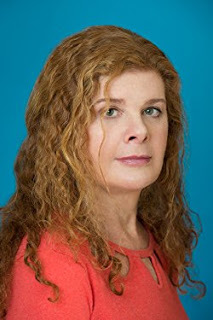
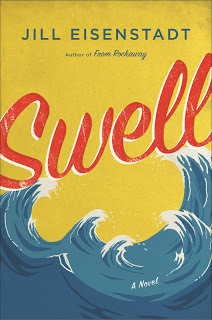 <!-- /* Font Definitions */ @font-face {font-family:Times; panose-1:2 0 5 0 0 0 0 0 0 0; mso-font-charset:0; mso-generic-font-family:auto; mso-font-pitch:variable; mso-font-signature:3 0 0 0 1 0;} @font-face {font-family:"MS 明朝"; mso-font-charset:78; mso-generic-font-family:auto; mso-font-pitch:variable; mso-font-signature:1 134676480 16 0 131072 0;} @font-face {font-family:"Cambria Math"; panose-1:2 4 5 3 5 4 6 3 2 4; mso-font-charset:0; mso-generic-font-family:auto; mso-font-pitch:variable; mso-font-signature:-536870145 1107305727 0 0 415 0;} @font-face {font-family:Cambria; panose-1:2 4 5 3 5 4 6 3 2 4; mso-font-charset:0; mso-generic-font-family:auto; mso-font-pitch:variable; mso-font-signature:-536870145 1073743103 0 0 415 0;} /* Style Definitions */ p.MsoNormal, li.MsoNormal, div.MsoNormal {mso-style-unhide:no; mso-style-qformat:yes; mso-style-parent:""; margin:0in; margin-bottom:.0001pt; mso-pagination:widow-orphan; font-size:12.0pt; font-family:Cambria; mso-ascii-font-family:Cambria; mso-ascii-theme-font:minor-latin; mso-fareast-font-family:"MS 明朝"; mso-fareast-theme-font:minor-fareast; mso-hansi-font-family:Cambria; mso-hansi-theme-font:minor-latin; mso-bidi-font-family:"Times New Roman"; mso-bidi-theme-font:minor-bidi;} .MsoChpDefault {mso-style-type:export-only; mso-default-props:yes; font-family:Cambria; mso-ascii-font-family:Cambria; mso-ascii-theme-font:minor-latin; mso-fareast-font-family:"MS 明朝"; mso-fareast-theme-font:minor-fareast; mso-hansi-font-family:Cambria; mso-hansi-theme-font:minor-latin; mso-bidi-font-family:"Times New Roman"; mso-bidi-theme-font:minor-bidi;} @page WordSection1 {size:8.5in 11.0in; margin:1.0in 1.25in 1.0in 1.25in; mso-header-margin:.5in; mso-footer-margin:.5in; mso-paper-source:0;} div.WordSection1 {page:WordSection1;} </style><br /><div class="MsoNormal"><br /> I'm so excited to host <a href="http://jilleisenstadt.com/">Jill Eisenstadt, </a>the author of the novels FROM ROCKAWAY (Knopf, 1987/Vintage Contemporaries, 1988, Back Bay Books, 2017), KISS OUT (Knopf, 1991) and SWELL, (Little, Brown & Co). Her essays, articles and short fiction have appeared in such publications as The New York Times, New York Magazine, Mademoiselle, Seventeen, Vogue, Elle, Bomb, and more.<br /><br />Swell, her newest novel, is set against the shoreline of Rockaway Beach, Queens, and it takes on a darkly comic look at family, a haunted house, secrets and of course, surprises. It's a wonderful novel, and thank you again, Jill, for being here!</div><div class="MsoNormal"><b><br /></b></div><div class="MsoNormal"><b>I so remember <i style="mso-bidi-font-style: normal;">From Rockaway</i>, your first novel. I so loved that book. Do you feel like a different writer now? And if so, how so?</b></div><div class="MsoNormal"><br /></div><div class="MsoNormal">Thank you! </div><div class="MsoNormal"><br /></div><div class="MsoNormal"><span style="mso-spacerun: yes;"> </span>Naturally life experience has deepened and broadened my understanding but my sensibility and connection to writing remains the same.<span style="mso-spacerun: yes;"> </span>It took quite a bit of work on <i style="mso-bidi-font-style: normal;">Swell </i>for me to<i style="mso-bidi-font-style: normal;"> </i>realize that the former firefighter from whose perspective I’d been writing was actually Tim from <i style="mso-bidi-font-style: normal;">From Rockaway, </i>only older<i style="mso-bidi-font-style: normal;">. </i>Time had changed the character too but it was still his voice and point of view. </div><div class="MsoNormal"><br /></div><div class="MsoNormal"><b><span style="mso-spacerun: yes;"> </span>What was the “why now, why this book” moment for <i style="mso-bidi-font-style: normal;">Swell</i>? I always want to know, too, if the finished novel was anything like the initial idea? </b></div><div class="MsoNormal"><br /></div><div class="MsoNormal">I had no “why now, why this book” moment. For years I’d resisted writing fiction about Rockaway or even the outer boroughs again.<span style="mso-spacerun: yes;"> </span>But I remained obsessed with the place and kept notes. Something cracked when I was asked to contribute a Rockaway story to the anthology Queens Noir (Akasic Books). I immediately knew what I’d write and was so engaged in doing so that I absolutely had to continue. The finished novel resembles the general initial idea but<span style="mso-spacerun: yes;"> </span>a great many specifics changed along the way. </div><div class="MsoNormal"><br /></div><div class="MsoNormal"><b>I loved the haunted house. Ever been in one?</b></div><div class="MsoNormal"><br /></div><div class="MsoNormal">It’s thrilling to read about haunted houses [see Shirley Jackson] and I want to believe they exist but for me, it’s difficult. </div><div class="MsoNormal"><span style="mso-spacerun: yes;"> </span><i style="mso-bidi-font-style: normal;">Swell</i> aims to point to the ways people and places continue to haunt us long after they’re gone. Even our own younger selves seem to hover around us like ghosts. A swell is a system of ocean waves that aren’t created by local winds but in some former, stormy place, in the past.<span style="mso-spacerun: yes;"> </span>This is why you can go to the beach on a beautiful, still sunny day and find big, rough water.<span style="mso-spacerun: yes;"> </span></div><div class="MsoNormal"><br /></div><div class="MsoNormal"><b>What kind of writer are you? Do you write things out on sheets of paper, use Scrivenor, fly by the seat of your pen? </b></div><div class="MsoNormal">I’m an everything writer --- blank books, computer, scraps of paper, the Notes function on my Iphone — whatever is handy. </div><div class="MsoNormal"><b><br /></b></div><div class="MsoNormal"><b>What’s obsessing you now and why?</b></div><div class="MsoNormal"><br />History. Time capsules. Back when <i style="mso-bidi-font-style: normal;">From Rockaway</i> was still in galleys (1986 or 7), I added it to a time capsule that was being a buried in Rockaway. Recently, I noticed that there is no marker at the spot and began a small investigation.<span style="mso-spacerun: yes;"> </span>A newspaper account at the time named the library as the capsule’s custodian. But nobody in the Queens library system seems to know anything about it or care. It got me thinking about local history, about centuries of buried stories and about the idea that a book itself is a form of time capsule.<span style="mso-spacerun: yes;"> </span></div><div class="MsoNormal"><b><br /></b></div><div class="MsoNormal"><b>What question didn’t I ask that I should have? </b></div><div class="MsoNormal">Would you like to have a drink sometime? <style><!-- /* Font Definitions */ @font-face {font-family:Times; panose-1:2 0 5 0 0 0 0 0 0 0; mso-font-charset:0; mso-generic-font-family:auto; mso-font-pitch:variable; mso-font-signature:3 0 0 0 1 0;} @font-face {font-family:"MS 明朝"; mso-font-charset:78; mso-generic-font-family:auto; mso-font-pitch:variable; mso-font-signature:1 134676480 16 0 131072 0;} @font-face {font-family:"Cambria Math"; panose-1:2 4 5 3 5 4 6 3 2 4; mso-font-charset:0; mso-generic-font-family:auto; mso-font-pitch:variable; mso-font-signature:-536870145 1107305727 0 0 415 0;} @font-face {font-family:Cambria; panose-1:2 4 5 3 5 4 6 3 2 4; mso-font-charset:0; mso-generic-font-family:auto; mso-font-pitch:variable; mso-font-signature:-536870145 1073743103 0 0 415 0;} /* Style Definitions */ p.MsoNormal, li.MsoNormal, div.MsoNormal {mso-style-unhide:no; mso-style-qformat:yes; mso-style-parent:""; margin:0in; margin-bottom:.0001pt; mso-pagination:widow-orphan; font-size:12.0pt; font-family:Cambria; mso-ascii-font-family:Cambria; mso-ascii-theme-font:minor-latin; mso-fareast-font-family:"MS 明朝"; mso-fareast-theme-font:minor-fareast; mso-hansi-font-family:Cambria; mso-hansi-theme-font:minor-latin; mso-bidi-font-family:"Times New Roman"; mso-bidi-theme-font:minor-bidi;} .MsoChpDefault {mso-style-type:export-only; mso-default-props:yes; font-family:Cambria; mso-ascii-font-family:Cambria; mso-ascii-theme-font:minor-latin; mso-fareast-font-family:"MS 明朝"; mso-fareast-theme-font:minor-fareast; mso-hansi-font-family:Cambria; mso-hansi-theme-font:minor-latin; mso-bidi-font-family:"Times New Roman"; mso-bidi-theme-font:minor-bidi;} @page WordSection1 {size:8.5in 11.0in; margin:1.0in 1.25in 1.0in 1.25in; mso-header-margin:.5in; mso-footer-margin:.5in; mso-paper-source:0;} div.WordSection1 {page:WordSection1;} </style></div><br /><div class="MsoNormal"><br /></div><div class="MsoNormal"><br /></div>
<!-- /* Font Definitions */ @font-face {font-family:Times; panose-1:2 0 5 0 0 0 0 0 0 0; mso-font-charset:0; mso-generic-font-family:auto; mso-font-pitch:variable; mso-font-signature:3 0 0 0 1 0;} @font-face {font-family:"MS 明朝"; mso-font-charset:78; mso-generic-font-family:auto; mso-font-pitch:variable; mso-font-signature:1 134676480 16 0 131072 0;} @font-face {font-family:"Cambria Math"; panose-1:2 4 5 3 5 4 6 3 2 4; mso-font-charset:0; mso-generic-font-family:auto; mso-font-pitch:variable; mso-font-signature:-536870145 1107305727 0 0 415 0;} @font-face {font-family:Cambria; panose-1:2 4 5 3 5 4 6 3 2 4; mso-font-charset:0; mso-generic-font-family:auto; mso-font-pitch:variable; mso-font-signature:-536870145 1073743103 0 0 415 0;} /* Style Definitions */ p.MsoNormal, li.MsoNormal, div.MsoNormal {mso-style-unhide:no; mso-style-qformat:yes; mso-style-parent:""; margin:0in; margin-bottom:.0001pt; mso-pagination:widow-orphan; font-size:12.0pt; font-family:Cambria; mso-ascii-font-family:Cambria; mso-ascii-theme-font:minor-latin; mso-fareast-font-family:"MS 明朝"; mso-fareast-theme-font:minor-fareast; mso-hansi-font-family:Cambria; mso-hansi-theme-font:minor-latin; mso-bidi-font-family:"Times New Roman"; mso-bidi-theme-font:minor-bidi;} .MsoChpDefault {mso-style-type:export-only; mso-default-props:yes; font-family:Cambria; mso-ascii-font-family:Cambria; mso-ascii-theme-font:minor-latin; mso-fareast-font-family:"MS 明朝"; mso-fareast-theme-font:minor-fareast; mso-hansi-font-family:Cambria; mso-hansi-theme-font:minor-latin; mso-bidi-font-family:"Times New Roman"; mso-bidi-theme-font:minor-bidi;} @page WordSection1 {size:8.5in 11.0in; margin:1.0in 1.25in 1.0in 1.25in; mso-header-margin:.5in; mso-footer-margin:.5in; mso-paper-source:0;} div.WordSection1 {page:WordSection1;} </style><br /><div class="MsoNormal"><br /> I'm so excited to host <a href="http://jilleisenstadt.com/">Jill Eisenstadt, </a>the author of the novels FROM ROCKAWAY (Knopf, 1987/Vintage Contemporaries, 1988, Back Bay Books, 2017), KISS OUT (Knopf, 1991) and SWELL, (Little, Brown & Co). Her essays, articles and short fiction have appeared in such publications as The New York Times, New York Magazine, Mademoiselle, Seventeen, Vogue, Elle, Bomb, and more.<br /><br />Swell, her newest novel, is set against the shoreline of Rockaway Beach, Queens, and it takes on a darkly comic look at family, a haunted house, secrets and of course, surprises. It's a wonderful novel, and thank you again, Jill, for being here!</div><div class="MsoNormal"><b><br /></b></div><div class="MsoNormal"><b>I so remember <i style="mso-bidi-font-style: normal;">From Rockaway</i>, your first novel. I so loved that book. Do you feel like a different writer now? And if so, how so?</b></div><div class="MsoNormal"><br /></div><div class="MsoNormal">Thank you! </div><div class="MsoNormal"><br /></div><div class="MsoNormal"><span style="mso-spacerun: yes;"> </span>Naturally life experience has deepened and broadened my understanding but my sensibility and connection to writing remains the same.<span style="mso-spacerun: yes;"> </span>It took quite a bit of work on <i style="mso-bidi-font-style: normal;">Swell </i>for me to<i style="mso-bidi-font-style: normal;"> </i>realize that the former firefighter from whose perspective I’d been writing was actually Tim from <i style="mso-bidi-font-style: normal;">From Rockaway, </i>only older<i style="mso-bidi-font-style: normal;">. </i>Time had changed the character too but it was still his voice and point of view. </div><div class="MsoNormal"><br /></div><div class="MsoNormal"><b><span style="mso-spacerun: yes;"> </span>What was the “why now, why this book” moment for <i style="mso-bidi-font-style: normal;">Swell</i>? I always want to know, too, if the finished novel was anything like the initial idea? </b></div><div class="MsoNormal"><br /></div><div class="MsoNormal">I had no “why now, why this book” moment. For years I’d resisted writing fiction about Rockaway or even the outer boroughs again.<span style="mso-spacerun: yes;"> </span>But I remained obsessed with the place and kept notes. Something cracked when I was asked to contribute a Rockaway story to the anthology Queens Noir (Akasic Books). I immediately knew what I’d write and was so engaged in doing so that I absolutely had to continue. The finished novel resembles the general initial idea but<span style="mso-spacerun: yes;"> </span>a great many specifics changed along the way. </div><div class="MsoNormal"><br /></div><div class="MsoNormal"><b>I loved the haunted house. Ever been in one?</b></div><div class="MsoNormal"><br /></div><div class="MsoNormal">It’s thrilling to read about haunted houses [see Shirley Jackson] and I want to believe they exist but for me, it’s difficult. </div><div class="MsoNormal"><span style="mso-spacerun: yes;"> </span><i style="mso-bidi-font-style: normal;">Swell</i> aims to point to the ways people and places continue to haunt us long after they’re gone. Even our own younger selves seem to hover around us like ghosts. A swell is a system of ocean waves that aren’t created by local winds but in some former, stormy place, in the past.<span style="mso-spacerun: yes;"> </span>This is why you can go to the beach on a beautiful, still sunny day and find big, rough water.<span style="mso-spacerun: yes;"> </span></div><div class="MsoNormal"><br /></div><div class="MsoNormal"><b>What kind of writer are you? Do you write things out on sheets of paper, use Scrivenor, fly by the seat of your pen? </b></div><div class="MsoNormal">I’m an everything writer --- blank books, computer, scraps of paper, the Notes function on my Iphone — whatever is handy. </div><div class="MsoNormal"><b><br /></b></div><div class="MsoNormal"><b>What’s obsessing you now and why?</b></div><div class="MsoNormal"><br />History. Time capsules. Back when <i style="mso-bidi-font-style: normal;">From Rockaway</i> was still in galleys (1986 or 7), I added it to a time capsule that was being a buried in Rockaway. Recently, I noticed that there is no marker at the spot and began a small investigation.<span style="mso-spacerun: yes;"> </span>A newspaper account at the time named the library as the capsule’s custodian. But nobody in the Queens library system seems to know anything about it or care. It got me thinking about local history, about centuries of buried stories and about the idea that a book itself is a form of time capsule.<span style="mso-spacerun: yes;"> </span></div><div class="MsoNormal"><b><br /></b></div><div class="MsoNormal"><b>What question didn’t I ask that I should have? </b></div><div class="MsoNormal">Would you like to have a drink sometime? <style><!-- /* Font Definitions */ @font-face {font-family:Times; panose-1:2 0 5 0 0 0 0 0 0 0; mso-font-charset:0; mso-generic-font-family:auto; mso-font-pitch:variable; mso-font-signature:3 0 0 0 1 0;} @font-face {font-family:"MS 明朝"; mso-font-charset:78; mso-generic-font-family:auto; mso-font-pitch:variable; mso-font-signature:1 134676480 16 0 131072 0;} @font-face {font-family:"Cambria Math"; panose-1:2 4 5 3 5 4 6 3 2 4; mso-font-charset:0; mso-generic-font-family:auto; mso-font-pitch:variable; mso-font-signature:-536870145 1107305727 0 0 415 0;} @font-face {font-family:Cambria; panose-1:2 4 5 3 5 4 6 3 2 4; mso-font-charset:0; mso-generic-font-family:auto; mso-font-pitch:variable; mso-font-signature:-536870145 1073743103 0 0 415 0;} /* Style Definitions */ p.MsoNormal, li.MsoNormal, div.MsoNormal {mso-style-unhide:no; mso-style-qformat:yes; mso-style-parent:""; margin:0in; margin-bottom:.0001pt; mso-pagination:widow-orphan; font-size:12.0pt; font-family:Cambria; mso-ascii-font-family:Cambria; mso-ascii-theme-font:minor-latin; mso-fareast-font-family:"MS 明朝"; mso-fareast-theme-font:minor-fareast; mso-hansi-font-family:Cambria; mso-hansi-theme-font:minor-latin; mso-bidi-font-family:"Times New Roman"; mso-bidi-theme-font:minor-bidi;} .MsoChpDefault {mso-style-type:export-only; mso-default-props:yes; font-family:Cambria; mso-ascii-font-family:Cambria; mso-ascii-theme-font:minor-latin; mso-fareast-font-family:"MS 明朝"; mso-fareast-theme-font:minor-fareast; mso-hansi-font-family:Cambria; mso-hansi-theme-font:minor-latin; mso-bidi-font-family:"Times New Roman"; mso-bidi-theme-font:minor-bidi;} @page WordSection1 {size:8.5in 11.0in; margin:1.0in 1.25in 1.0in 1.25in; mso-header-margin:.5in; mso-footer-margin:.5in; mso-paper-source:0;} div.WordSection1 {page:WordSection1;} </style></div><br /><div class="MsoNormal"><br /></div><div class="MsoNormal"><br /></div>
Published on July 24, 2017 18:24
Come on, who doesn't want to read about NYC in the 1970s, when it was the most dangerous city in the world? Janet Capron is here to talk about it and her "mostly true" account of the downtown scene--and her place in it-- in the ever fabulous, Blue Money
<!-- /* Font Definitions */ @font-face {font-family:"Cambria Math"; panose-1:2 4 5 3 5 4 6 3 2 4; mso-font-charset:0; mso-generic-font-family:auto; mso-font-pitch:variable; mso-font-signature:-536870145 1107305727 0 0 415 0;} @font-face {font-family:"Arial Unicode MS"; panose-1:2 11 6 4 2 2 2 2 2 4; mso-font-charset:0; mso-generic-font-family:auto; mso-font-pitch:variable; mso-font-signature:3 0 0 0 1 0;} @font-face {font-family:Garamond; panose-1:2 2 4 4 3 3 1 1 8 3; mso-font-charset:0; mso-generic-font-family:auto; mso-font-pitch:variable; mso-font-signature:3 0 0 0 1 0;} @font-face {font-family:"Times New Roman Bold"; panose-1:2 2 8 3 7 5 5 2 3 4; mso-font-charset:0; mso-generic-font-family:auto; mso-font-pitch:variable; mso-font-signature:-536859905 -1073711039 9 0 511 0;} /* Style Definitions */ p.MsoNormal, li.MsoNormal, div.MsoNormal {mso-style-unhide:no; mso-style-qformat:yes; mso-style-parent:""; margin:0in; margin-bottom:.0001pt; mso-pagination:widow-orphan; font-size:10.0pt; font-family:"Times New Roman"; mso-fareast-font-family:"Arial Unicode MS"; color:#1A1A1A; border:none; text-underline:#1A1A1A;} p.MsoHeader, li.MsoHeader, div.MsoHeader {mso-style-priority:99; mso-style-link:"Header Char"; margin:0in; margin-bottom:.0001pt; mso-pagination:widow-orphan; tab-stops:center 3.0in right 6.0in; font-size:10.0pt; font-family:"Times New Roman"; mso-fareast-font-family:"Arial Unicode MS"; color:#1A1A1A; border:none; text-underline:#1A1A1A;} span.HeaderChar {mso-style-name:"Header Char"; mso-style-priority:99; mso-style-unhide:no; mso-style-locked:yes; mso-style-link:Header; mso-ansi-font-size:10.0pt; mso-bidi-font-size:10.0pt; font-family:"Times New Roman"; mso-ascii-font-family:"Times New Roman"; mso-hansi-font-family:"Times New Roman"; mso-bidi-font-family:"Times New Roman"; border:none;} .MsoChpDefault {mso-style-type:export-only; mso-default-props:yes; font-family:"Times New Roman Bold"; mso-ascii-font-family:"Times New Roman Bold"; mso-fareast-font-family:"Arial Unicode MS"; mso-hansi-font-family:"Times New Roman Bold"; mso-bidi-font-family:"Times New Roman Bold"; color:#1A1A1A; text-underline:#1A1A1A;} @page WordSection1 {size:8.5in 11.0in; margin:1.0in 1.2in 1.0in 1.25in; mso-header-margin:.5in; mso-footer-margin:.5in; mso-paper-source:0;} div.WordSection1 {page:WordSection1;} </style><br /><div align="center" class="MsoNormal" style="line-height: 115%; text-align: center;"><div class="separator" style="clear: both; text-align: center;"><a href="https://1.bp.blogspot.com/-qXyJtqbsPu..." imageanchor="1" style="margin-left: 1em; margin-right: 1em;"><img border="0" data-original-height="218" data-original-width="218" src="https://1.bp.blogspot.com/-qXyJtqbsPu..." /></a></div><table align="center" cellpadding="0" cellspacing="0" class="tr-caption-container" style="margin-left: auto; margin-right: auto; text-align: center;"><tbody><tr><td style="text-align: center;"><a href="https://2.bp.blogspot.com/-eSvBwj-qP-..." imageanchor="1" style="margin-left: auto; margin-right: auto;"><img border="0" data-original-height="817" data-original-width="600" height="320" src="https://2.bp.blogspot.com/-eSvBwj-qP-..." width="235" /></a></td></tr><tr><td class="tr-caption" style="text-align: center;">photo by Maggie Berkvist </td></tr></tbody></table><br /></div><div class="MsoNormal" style="line-height: 115%;"><i><span style="font-size: 11.0pt; line-height: 115%;"> I've always </span><span style="font-size: 11.0pt; line-height: 115%;">adored New York City, and I got here in the early 80s, when it was still dangerous to walk up 8th Avenue to my apartment (I had to ask couples to walk me home), when AIDS was </span><span style="font-size: 11.0pt; line-height: 115%;">claiming way too many lives, drugs were rampant, and it was scary. And exhilarating. So, of course, I love Janet Capron's debut novel/memoir, BLUE MONEY. And I am so, so thrilled to have her here. Really, you want to buy six copies of this because every page is a memory that's startling, shocking and yeah--amazing, too. Thank you so much, Janet, for being here!</span></i><b style="mso-bidi-font-weight: normal;"><span style="font-size: 11.0pt; line-height: 115%;"></span></b><br /><b style="mso-bidi-font-weight: normal;"><span style="font-size: 11.0pt; line-height: 115%;"><br /></span></b><i><span style="font-size: 11.0pt; line-height: 115%;">And I'm not the only one who is going nuts for this book. </span></i><br /><div class="MsoNormal" style="mso-margin-bottom-alt: auto; mso-margin-top-alt: auto;"><i><span style="font-family: "times"; font-size: 10.0pt;">Blue Money </span><span style="font-family: "times"; font-size: 10.0pt;">came out on June 20 and was <a href="http://www.thenationalbookreview.com/... Book Review’s</a> #1 pick of that week:</span></i></div><div class="MsoNormal"><i><br /></i></div><div class="MsoNormal"><i><span style="font-family: "times"; font-size: 10.0pt;"><a href="http://www.playboy.com/articles/janet... </a>interviewed her on June 14 and <a href="http://www.playboy.com/articles/blue-... a chapter of Blue Money:</span></i></div><br /><b style="mso-bidi-font-weight: normal;"><span style="font-size: 11.0pt; line-height: 115%;">Tell us about the “why now, why this book” moment when you started <i style="mso-bidi-font-style: normal;">Blue Money</i>:</span></b></div><div class="MsoNormal" style="line-height: 115%;"><span style="font-size: 11.0pt; line-height: 115%;">Back when I was an undergrad at Columbia, having returned to college after a long hiatus in the street, the head of the Adult Creative Writing Program, J.R. Humphries, seized on a story I wrote for his workshop. It was about a post-doc physicist, a nerd, and the massage parlor hooker he falls for—a contemporary take on “Blue Angel”. I forget how Humphries knew it came out of my experience, but he did, and he said I should be mining that material. I was reluctant at first because I was enjoying my new-found respectability, but Humphreys said something else that stayed with me: “You’ll always remember your childhood, and of course, you’ll always be able to draw on your current life, but the twenties you’ll forget, so don’t put off writing about those years indefinitely, because they could get away from you.”</span></div><div class="MsoNormal" style="line-height: 115%;"><span style="font-size: 11.0pt; line-height: 115%;"><span style="mso-tab-count: 1;"> </span> </span><br /><span style="font-size: 11.0pt; line-height: 115%;">A few years and many short stories later, after attending the Graduate Creative Writing Program at Columbia, I was finally ready to start writing a book. I remembered what Humphries told me and decided the hell with it, I was going to write a book about my twenties, which eventually became <i style="mso-bidi-font-style: normal;">Blue Money</i>. </span></div><div class="MsoNormal" style="line-height: 115%;"><br /></div><div class="MsoNormal" style="line-height: 115%;"><b style="mso-bidi-font-weight: normal;"><span style="border: none; color: black; font-size: 11.0pt; line-height: 115%;"><span style="border: none;">New Yor</span></span></b><b style="mso-bidi-font-weight: normal;"><span style="border: none; color: black; font-size: 11.0pt; line-height: 115%;"><span style="border: none;">k City in the 70s and Avenue C—I </span></span></b><b style="mso-bidi-font-weight: normal;"><span style="border: none; color: black; font-size: 11.0pt; line-height: 115%;"><span style="border: none;">got to Manhattan in 1980, but even then it was still dangerous, so I can imagine the allure</span></span></b><b style="mso-bidi-font-weight: normal;"><span style="border: none; color: black; font-size: 11.0pt; line-height: 115%;"><span style="border: none;">—and </span></span></b><b style="mso-bidi-font-weight: normal;"><span style="border: none; color: black; font-size: 11.0pt; line-height: 115%;"><span style="border: none;">the terror, both. What did it feel <span style="border: none;">like to go back into those memories? What do you miss about that time?</span></span></span></b><b style="mso-bidi-font-weight: normal;"><span style="border: none; color: windowtext; font-size: 11.0pt; line-height: 115%; mso-fareast-font-family: "Times New Roman";"></span></b></div><div class="MsoNormal" style="line-height: 115%;"><span style="font-size: 11.0pt; line-height: 115%;">Maybe we’re hardwired to forget fear in the same way we forget pain, but I don’t remember being scared very much at all. I do remember running wild through a much rougher Tompkins Square Park at 4:00 AM looking for my junky boyfriend, and it seems to me now that the muggers were the ones who were afraid. However, there is one big exception—an experience so traumatic that I didn’t want to go near it. My mother, God bless her, told me I had to include the climatic, explicit scene that comes at the end of <i style="mso-bidi-font-style: normal;">Blue Money</i>. I won’t divulge it here. She said, “If you’re going to write about your years in the street, don’t make it sound like it was all fun and games—tell the whole story, tell the truth. “ She shamed me into it. I couldn’t sleep while I was writing that scene. </span></div><div class="MsoNormal" style="line-height: 115%;"><span style="font-size: 11.0pt; line-height: 115%;"><span style="mso-tab-count: 1;"> </span></span><br /><span style="font-size: 11.0pt; line-height: 115%;"><span style="mso-tab-count: 1;"> </span>I miss the counter-culture just about every day. I miss the fighting in the streets. I miss that last clarion call—the music especially—before 1984 descended on all of us.</span></div><div class="MsoNormal" style="line-height: 115%;"><br /></div><div class="MsoNormal" style="line-height: 115%;"><b style="mso-bidi-font-weight: normal;"><span style="border: none; color: black; font-size: 11.0pt; line-height: 115%;"><span style="border: none;">Wha<span style="border: none;">t kind of writer are you? Do you outline, stop and start? </span></span></span></b><b style="mso-bidi-font-weight: normal;"><span style="border: none; color: black; font-size: 11.0pt; line-height: 115%;"></span></b></div><div class="MsoNormal" style="line-height: 115%;"><span style="border: none; color: black; font-size: 11.0pt; line-height: 115%;"><span style="border: none;">I <span style="border: none;">would love<span style="border: none;"> to write an open-ended novel in which the characters take me wherever they want to go. What a luxury! <span style="border: none;">After I had<span style="border: none;"> finished <span style="border: none;">the first <span style="border: none;">150 pages of </span></span></span></span></span></span></span></span><i style="mso-bidi-font-style: normal;"><span style="border: none; color: black; font-size: 11.0pt; line-height: 115%;"><span style="border: none;">Blue Money</span></span></i><span style="border: none; color: black; font-size: 11.0pt; line-height: 115%;"><span style="border: none;">, E<span style="border: none;">d Burlingame, who had <span style="border: none;">been the head of t<span style="border: none;">rade at Harper & Row and then gone on to have his own imprint at HarperCollins, made an offer based on those <span style="border: none;">first <span style="border: none;">150 pages and an outline<span style="border: none;"> of the rest of the book<span style="border: none;">, which <span style="border: none;">he requested<span style="border: none;">. My then agent thought there was going to be a bidding<span style="border: none;"> war and tried to stall him. I didn’t know what to think, but by the time I told her to take it, Burlingame had changed his mind. <span style="border: none;">Nevertheless, <span style="border: none;">I stuck pretty close to th<span style="border: none;">at original <span style="border: none;">outline, although of course <span style="border: none;">in later drafts <span style="border: none;">it changed some. For i<span style="border: none;">nstance,<span style="border: none;"> a smart writer friend <span style="border: none;">suggested I <span style="border: none;">move back<span style="border: none;"> the live sex show chapter, give the reader a little <span style="border: none;">more <span style="border: none;">time to ease into it, which I did. </span></span></span></span></span></span></span></span></span></span></span></span></span></span></span></span></span></span></span></span></span></span></span></span></span><span style="border: none; color: black; font-size: 11.0pt; line-height: 115%;"></span></div><div class="MsoNormal" style="line-height: 115%;"><span style="border: none; color: black; font-size: 11.0pt; line-height: 115%;"><span style="mso-tab-count: 1;"> </span><span style="border: none;">The book I’m<span style="border: none;"> curren<span style="border: none;">tly working on, a novel called </span></span></span></span><i style="mso-bidi-font-style: normal;"><span style="border: none; color: black; font-size: 11.0pt; line-height: 115%;"><span style="border: none;">Harem</span></span></i><span style="border: none; color: black; font-size: 11.0pt; line-height: 115%;"><span style="border: none;">,<span style="border: none;"> has an outline, which I’m following to the T <span style="border: none;">so far<span style="border: none;">. The third planned book, <span style="border: none;">also a novel called </span></span></span></span></span></span><i style="mso-bidi-font-style: normal;"><span style="border: none; color: black; font-size: 11.0pt; line-height: 115%;"><span style="border: none;">The Hot Stove</span></span></i><span style="border: none; color: black; font-size: 11.0pt; line-height: 115%;"><span style="border: none;">,<span style="border: none;"> <span style="border: none;">already has<span style="border: none;"> a synopsis. <span style="border: none;">(<span style="border: none;">I’m writing <span style="border: none;">now <span style="border: none;">to beat the clock—got to make up for lost time—all the years spent <span style="border: none;">in pharmaceutical advertising <span style="border: none;">churning out<span style="border: none;"> bulle<span style="border: none;">ted copy<span style="border: none;"> and captions for charts and gr<span style="border: none;">aphs<span style="border: none;">.) Funny, until you asked, I never thought of myself as a writer who works with an outline, but I guess I am. </span></span></span></span></span></span></span></span></span></span></span></span></span></span></span></span></div><div class="MsoNormal" style="line-height: 115%;"><br /></div><div class="MsoNormal"><b style="mso-bidi-font-weight: normal;"><span style="border: none; color: black; font-size: 11.0pt;"><span style="border: none;">What's obsessing you now and why? </span></span></b><b style="mso-bidi-font-weight: normal;"><span style="border: none; color: black; font-size: 11.0pt;"></span></b></div><div class="MsoNormal"><span style="border: none; color: black; font-size: 11.0pt;"><span style="border: none;">That’s such a great question to ask an obsessive. </span></span><span style="border: none; color: black; font-size: 11.0pt;"></span></div><div class="MsoNormal"><br /></div><div class="MsoNormal" style="line-height: 115%;"><span style="border: none; color: black; font-size: 11.0pt; line-height: 115%;"><span style="border: none;">Right now promoting </span></span><i style="mso-bidi-font-style: normal;"><span style="border: none; color: black; font-size: 11.0pt; line-height: 115%;"><span style="border: none;">Blue Money</span></span></i><i style="mso-bidi-font-style: normal;"><span style="border: none; color: black; font-size: 11.0pt; line-height: 115%;"><span style="border: none;">,</span></span></i><span style="border: none; color: black; font-size: 11.0pt; line-height: 115%;"><span style="border: none;"> which just came out a month ago. I’m not kidding—it’s bordering on obsession. </span></span><span style="border: none; color: black; font-size: 11.0pt; line-height: 115%;"></span></div><div class="MsoNormal" style="line-height: 115%;"><br /></div><div class="MsoNormal" style="line-height: 115%;"><span style="border: none; color: black; font-size: 11.0pt; line-height: 115%;"><span style="border: none;">Before promoting </span></span><i style="mso-bidi-font-style: normal;"><span style="border: none; color: black; font-size: 11.0pt; line-height: 115%;"><span style="border: none;">Blue Money</span></span></i><span style="border: none; color: black; font-size: 11.0pt; line-height: 115%;"><span style="border: none;"> took over my every waking moment, o<span style="border: none;">ne</span></span></span><span style="border: none; color: black; font-size: 11.0pt; line-height: 115%;"><span style="border: none;"> of the themes that run through </span></span><span style="border: none; color: black; font-size: 11.0pt; line-height: 115%;"><span style="border: none;">the book</span></span><span style="border: none; color: black; font-size: 11.0pt; line-height: 115%;"><span style="border: none;"> </span></span><span style="border: none; color: black; font-size: 11.0pt; line-height: 115%;"><span style="border: none;">continued to haunt me<span style="border: none;">:<span style="border: none;"> Female sexuality, including</span></span></span></span><span style="border: none; color: black; font-size: 11.0pt; line-height: 115%;"><span style="border: none;"> <span style="border: none;">genuine satisfaction</span></span></span><span style="border: none; color: black; font-size: 11.0pt; line-height: 115%;"><span style="border: none;"> (<span style="border: none;">which is <span style="border: none;">the subject of </span></span></span></span><i style="mso-bidi-font-style: normal;"><span style="border: none; color: black; font-size: 11.0pt; line-height: 115%;"><span style="border: none;">Harem</span></span></i><span style="border: none; color: black; font-size: 11.0pt; line-height: 115%;"><span style="border: none;">, the book I’m working on now)<span style="border: none;">. <span style="border: none;">I read </span></span></span></span><i style="mso-bidi-font-style: normal;"><span style="border: none; color: black; font-size: 11.0pt; line-height: 115%;"><span style="border: none;">The Female Eunuch</span></span></i><span style="border: none; color: black; font-size: 11.0pt; line-height: 115%;"><span style="border: none;"> by Germaine Greer when it came out in the U.S. in 1970, <span style="border: none;">and it <span style="border: none;">has <span style="border: none;">in<span style="border: none;">formed my thinking <span style="border: none;">on<span style="border: none;"> the subject ever since. I just reread<span style="border: none;"> <span style="border: none;">that book and its sequel, </span></span></span></span></span></span></span></span></span></span><i style="mso-bidi-font-style: normal;"><span style="border: none; color: black; font-size: 11.0pt; line-height: 115%;"><span style="border: none;">The Whole Woman</span></span></i><span style="border: none; color: black; font-size: 11.0pt; line-height: 115%;"><span style="border: none;">, <span style="border: none;">in preparation for <span style="border: none;">an essay I recently w<span style="border: none;">rote, “The Truth About Hooking”. <span style="border: none;">The essay is<span style="border: none;"> about the <span style="border: none;">rebellious <span style="border: none;">politics of sex work in the 70s, but more about how little has chan<span style="border: none;">ged and maybe even gotten worse<span style="border: none;"> <span style="border: none;">in terms of our understanding of the true nature of<span style="border: none;"> female sexuality<span style="border: none;">.<span style="border: none;"> Something is<span style="border: none;"> <span style="border: none;">universally <span style="border: none;">wrong. </span></span></span></span></span></span></span></span></span></span></span></span></span></span></span></span></span></span><span style="border: none; color: black; font-size: 11.0pt; line-height: 115%;"></span></div><div class="MsoNormal" style="line-height: 115%;"><span style="border: none; color: black; font-size: 11.0pt; line-height: 115%;"><span style="mso-tab-count: 1;"> </span><span style="border: none;"> </span></span><br /><span style="border: none; color: black; font-size: 11.0pt; line-height: 115%;"><span style="border: none;">Another subject that preoccupies me is the colonization of black people in this county—and around the world. I see our <span style="border: none;">empire as being propped up by endless wars abroad and domestic terrorism here at hom<span style="border: none;">e. During the past ten years, I’<span style="border: none;">ve moved <span style="border: none;">quite far <span style="border: none;">to the left and no longer believe the system can be reformed. This has been a wrenching, even agonizing process. I <span style="border: none;">was ra<span style="border: none;">ised<span style="border: none;"> in the temple of liberalism—my grandfather, the <span style="border: none;">newspaper <span style="border: none;">publisher J. David Stern, was an advisor to Roosevelt and one of the authors of the New Deal. So breaking with what amounted to a religion growing up, that of progressive reform, has been diffi<span style="border: none;">cult—not undertaken lightly. </span></span></span></span></span></span></span></span></span></span></span></span></span><span style="border: none; color: black; font-size: 11.0pt; line-height: 115%;"></span></div><div class="MsoNormal" style="line-height: 115%;"><br /></div><div class="MsoNormal" style="line-height: 115%;"><b style="mso-bidi-font-weight: normal;"><span style="border: none; color: black; font-family: "garamond"; font-size: 12.0pt; line-height: 115%;"><span style="border: none;">What question didn't I ask that I should have?</span></span></b></div><div class="MsoNormal" style="line-height: 115%;"><span style="border: none; color: black; font-size: 11.0pt; line-height: 115%;"><span style="border: none;">How does it feel to finally be able to call yourself a writer, a published writer?</span></span><span style="border: none; color: black; font-size: 11.0pt; line-height: 115%;"></span></div><div class="MsoNormal" style="line-height: 115%;"><span style="border: none; color: black; font-size: 11.0pt; line-height: 115%;"><span style="border: none;">Divine! Even better than I thought!</span></span><span style="border: none; color: black; font-size: 11.0pt; line-height: 115%;"></span></div><div class="MsoNormal" style="line-height: 115%;"><br /></div><div class="MsoNormal" style="line-height: 115%;"><br /></div><div class="MsoNormal" style="line-height: 115%;"><br /></div>
Published on July 24, 2017 17:06
Culinary Historian Laura Shapiro talks about What She Ate: Six Remarkable Women and the Food That Tells Their Stories, including why Helen Gurley Brown loved gelatin.
<!-- /* Font Definitions */ @font-face {font-family:"MS 明朝"; mso-font-charset:78; mso-generic-font-family:auto; mso-font-pitch:variable; mso-font-signature:1 134676480 16 0 131072 0;} @font-face {font-family:"Cambria Math"; panose-1:2 4 5 3 5 4 6 3 2 4; mso-font-charset:0; mso-generic-font-family:auto; mso-font-pitch:variable; mso-font-signature:-536870145 1107305727 0 0 415 0;} @font-face {font-family:Cambria; panose-1:2 4 5 3 5 4 6 3 2 4; mso-font-charset:0; mso-generic-font-family:auto; mso-font-pitch:variable; mso-font-signature:-536870145 1073743103 0 0 415 0;} /* Style Definitions */ p.MsoNormal, li.MsoNormal, div.MsoNormal {mso-style-unhide:no; mso-style-qformat:yes; mso-style-parent:""; margin:0in; margin-bottom:.0001pt; mso-pagination:widow-orphan; font-size:12.0pt; font-family:Cambria; mso-ascii-font-family:Cambria; mso-ascii-theme-font:minor-latin; mso-fareast-font-family:"MS 明朝"; mso-fareast-theme-font:minor-fareast; mso-hansi-font-family:Cambria; mso-hansi-theme-font:minor-latin; mso-bidi-font-family:"Times New Roman"; mso-bidi-theme-font:minor-bidi;} .MsoChpDefault {mso-style-type:export-only; mso-default-props:yes; font-family:Cambria; mso-ascii-font-family:Cambria; mso-ascii-theme-font:minor-latin; mso-fareast-font-family:"MS 明朝"; mso-fareast-theme-font:minor-fareast; mso-hansi-font-family:Cambria; mso-hansi-theme-font:minor-latin; mso-bidi-font-family:"Times New Roman"; mso-bidi-theme-font:minor-bidi;} @page WordSection1 {size:8.5in 11.0in; margin:1.0in 1.25in 1.0in 1.25in; mso-header-margin:.5in; mso-footer-margin:.5in; mso-paper-source:0;} div.WordSection1 {page:WordSection1;} </style><br /><div class="MsoNormal"><br /><div class="separator" style="clear: both; text-align: center;"><b style="mso-bidi-font-weight: normal;"><a href="https://3.bp.blogspot.com/-hWqxoParZV..." imageanchor="1" style="margin-left: 1em; margin-right: 1em;"><img border="0" data-original-height="469" data-original-width="325" height="320" src="https://3.bp.blogspot.com/-hWqxoParZV..." width="221" /></a></b></div><br /><div class="separator" style="clear: both; text-align: center;"><b style="mso-bidi-font-weight: normal;"><a href="https://1.bp.blogspot.com/-n1Tos7AwFn..." imageanchor="1" style="margin-left: 1em; margin-right: 1em;"><img border="0" data-original-height="300" data-original-width="200" src="https://1.bp.blogspot.com/-n1Tos7AwFn..." /></a></b></div><div class="separator" style="clear: both; text-align: center;"><b style="mso-bidi-font-weight: normal;"><br /></b></div><br /><br /><br /><div style="text-align: left;"><a href="https://laurashapirowriter.com/"... Shapiro </a>is a culinary historian--isn't that the most wonderful thing you've ever read? </div><div style="text-align: left;"><br /></div><div style="text-align: left;">She was a columnist at <i>The Real Paper</i> (Boston) before beginning a 16-year run at <i>Newsweek</i>, where she covered food, women’s issues and the arts and won several journalism awards. Her essays, reviews and features have also appeared in <i>The New Yorker</i>, <i>The New York Times</i>, <i>Conde Nast Traveler</i>, <i>Gourmet</i>, <i>Gastronomica</i>, <i>Slate</i> and many other publications. Her first book was <i>Perfection Salad: Women and Cooking at the Turn of the Century </i>(1986), which the University of California Press has reissued with a new Afterword. She is also the author of <i>Something from the Oven: Reinventing Dinner in 1950s America </i>(Viking, 2004), and <i>Julia Child</i> (Penguin Lives, 2007), which won the award for Literary Food Writing from the International Association of Culinary Professionals in 2008. Her work is represented in the Library of America’s <i>American Food Writing, The Virago Book of Food, </i>and <i>Best Food Writing 2002. </i>She is a frequent speaker and panelist on culinary history, and contributed a regular column on a wide range of food topics to <span class="skimlinks-unlinked">gourmet.com</span>, the <i>Gourmet</i> magazine website. During 2009-10 she was a fellow at the Cullman Center for Scholars and Writers at the New York Public Library.</div><div style="text-align: left;"><br /></div><div style="text-align: left;">In June 2012, the New York Public Library opened an exhibition called Lunch Hour NYC, co-curated by Shapiro and Rebecca Federman of the NYPL. Read Edward Rothstein’s review in the New York Times <a href="http://www.nytimes.com/2012/06/23/art..." rel="noopener noreferrer" target="_blank">here</a>. For more information about the exhibition, click <a href="http://www.nypl.org/events/exhibition..." rel="noopener noreferrer" target="_blank">here</a>.</div><div style="text-align: left;"><br /></div><div style="text-align: left;">More recently, Shapiro was featured in <a href="http://michaelpollan.com/videos/netfl..." rel="noopener noreferrer" target="_blank">Michael Pollan’s Netflix documentary series <i>Cooked</i></a> (2016).</div><div style="text-align: left;"><br /></div><div style="text-align: left;">I so adored this book and I'm so happy to have Laura here. Thank you, Laura! Now I am starving. </div><br /><br /><br /><b style="mso-bidi-font-weight: normal;">I adored this book. How difficult was it to choose the women you chose? And did you have a favorite? </b></div><div class="MsoNormal"><br />I started out with a nice little crowd of six women -- well, as nice as a crowd can be that has Eva Braun in it -- whom I had chosen for all sorts of impressionistic reasons that didn't always hold up once I started the research. I would go looking for a paper trail documenting the food in some way and simply not find one.<span style="mso-spacerun: yes;"> </span>So I held a few auditions, and although I only had three important criteria, it ended up taking quite a while to assemble the final group. </div><div class="MsoNormal" style="text-indent: .5in;"></div><div class="MsoNormal"><span style="mso-spacerun: yes;"> </span>First of all, she had to be dead. This was a hugely important requirement. I've worked as a journalist for many years, and when you write about someone as a journalist you're naturally dealing with a real, live person. You're responsible to her, you owe her a fanatic degree of accuracy, and yet no matter how hard you try to achieve that, in the end the story belongs to her. She owns her own life. Writing about someone whose life is over is quite different. I'm still going to be as accurate as I can possibly be; I'm certainly not going to invent anything, but I'm going to feel much more free to think around and around my subject and bring her to life in my own way. </div><div class="MsoNormal"><span style="mso-spacerun: yes;"> </span><br />Second, I looked for women whose lives were open to research, and in particular, obviously, research on their meals. This was tough. Most people just don't record what they ate. Or maybe they do, but the references to food are scattered randomly through hundreds or maybe thousands of unpublished letters. Actually that's my favorite kind of research -- I love reading people's mail -- but I just couldn't do it six times over for a single book project. I worked as much as possible with primary sources, but I had to bow to the logistics. </div><div class="MsoNormal"><span style="mso-spacerun: yes;"> </span><br />Third, I didn't want women with any kind of professional connection with food. I assumed early on that the food stories of chefs and cookbook writers would be sitting right out front on the surface of their lives, which would make them too obvious to be interesting. I wanted stories that were lurking below the surface. For that reason I almost didn't start reading about Rosa Lewis, since she was a professional caterer; but I couldn't resist...and sure enough, her relationship with food wasn't at all obvious. It was going to be wonderfully difficult to extract, so I decided to break my own rule.<span style="mso-spacerun: yes;"> </span></div><div class="MsoNormal"><span style="mso-spacerun: yes;"> </span><br />As for my favorite -- it's Barbara Pym. I've loved her books for years, my copies are falling apart from constant rereading, and I jumped at the chance to write about her in as much glorious and expansive detail as I wanted. </div><div class="MsoNormal"><br /></div><div class="MsoNormal"><br /></div><div class="MsoNormal"><b style="mso-bidi-font-weight: normal;">I admit I know the answer to this from reading your wonderful book, but I always have to ask, why this book now for you? What were you thinking about when you started it?</b></div><div class="MsoNormal"><br />The book that preceded this one was <i>Julia Child</i>, a short biography in the Penguin Lives series, and Julia was a such a perfect, peerless, incomparable and wonderful person to write about that I will probably never recover from the experience. As soon as it was published, I thought, I want to write another biography, and I want it to be about another Julia. But I couldn't find anyone else in the food world who appealed to me that much, and who hadn't already been written about quite a bit. So when I randomly picked up a biography of Dorothy Wordsworth one night, I think the food jumped out at me because I was ready to see it -- primed, in a way, to start wondering about culinary biographies of non-culinary people.</div><div class="MsoNormal"><br /></div><div class="MsoNormal"><b style="mso-bidi-font-weight: normal;">In a age where eating disorders are so prevalent, and glossy magazines always show 13-year-old models who weigh 95 pounds, it’s hard for women to remember that eating is a pleasure—and an important one.</b></div><div class="MsoNormal"><br />Yes, and the dieting advice you see everywhere is so full of inane messages -- Eating is fun! Eating is a pleasure! Just follow these rules obsessively, spend a fortune on ingredients and kitchen equipment, never eat anything resembling a normal meal, and you'll be happy and blonde and 25 forever.</div><div class="MsoNormal"><span style="mso-spacerun: yes;"> </span><br />Two of the women in the book have dieting obsessions, Eva Braun and Helen Gurley Brown, and although I didn't set out to write a cautionary tale in either case, I hope it's clear that when you cast food as your enemy, there will never be any such thing as victory. </div><div class="MsoNormal"><br /></div><div class="MsoNormal"><b style="mso-bidi-font-weight: normal;">I definitely agree with you that how we do our eating shows character! I fell in love with my husband on our first date because he insisted we try three different desserts!<span style="mso-spacerun: yes;"> </span>And I left a controlling guy because he monitored what I ate! Can you tell us a food story that involves you? </b></div><div class="MsoNormal"><br />My mother was a wonderful cook, and we always had great food at home, so when I got my own apartment I was delighted to be cooking and enjoying food<span style="mso-spacerun: yes;"> </span>just as I had been raised to do, but now in my very own home. Then I acquired a boyfriend who I think must have been one of the first neurotic foodies -- obsessed, but in a joyless way. He cared desperately about what he ate, shopped with fanatic care, and cooked very well because he knew all the best cookbooks and recipes. But he also worried quite a bit about his weight, so he used to serve himself, and me, the most minuscule portions I had ever seen. It was such a double message. He was being generous, in his own way, by doing all this excellent cooking; and then he would sit there looking nervous because I might eat too much. Giving and withholding, giving and withholding --ugh. I was so relieved when I finally figured this out and broke up with him.</div><div class="MsoNormal"><br /></div><div class="MsoNormal"><b style="mso-bidi-font-weight: normal;">I loved the story of Eleanor Roosevelt who protected the worst cook, and Helen Gurley Brown eating nothing at all—that one made me particularly sad because I always felt she was punishing herself under this veneer of cheer.<span style="mso-spacerun: yes;"> </span>Food indeed is our story, and I feel like people should pay more attention to how they eat and why they eat. Can you talk about this please? </b></div><div class="MsoNormal"><br />People do pay attention to how they eat these days, but it tends to be in the context of a crisis -- we're too fat, or we eat to much salt, or we have to cut out sugar, or we feel guilty because we're giving them pasta again instead of some beautiful Asian soup that we can't make without shopping in six different stores. If we could get past the worries, and the social/cultural demands that are always hovering, I think we'd be able to use our senses -- and our imaginations -- a lot more actively when we cook and eat. I see pictures of food posted on Instagram and Facebook, and I think yes, very nice, but that's only part of the story and probably not the most important part. The most important part you can't take a picture of -- it's what's going on in your mind and heart when you're crashing together a pan of macaroni and cheese for the kids, or in your psyche when you start planning a menu for a dinner party. Decode those messages, and you see where your food story is lurking.</div><div class="MsoNormal"><br /></div><div class="MsoNormal"><b style="mso-bidi-font-weight: normal;">What’s obsessing you now and why?</b><br /><br />More and more nowadays it seems as though people do nothing but think about food, at least judging by what's going on in social media and by the lines that start forming at 5 pm outside this or that buzzed-about new restaurant. But it doesn't seem to me that chasing the latest chef, or posting pictures of some new hybrid ice cream made with chicken livers and sesame seeds, has anything to do with what's truly important about food, namely nourishment and sharing. The thing they call molecular gastronomy is a perfect example. It's not about feeding anyone. It's for people who are so jaded, who have eaten so much, and spent so much money doing it, that there's no way to woo them anymore except by transcending food entirely and entertaining them with Cirque du Soleil on a plate. It drives me nuts to see food writers take this seriously, when there are so many people in this country we haven't reached, who deserve to be freed from the clutches of the food industry. Simple, fresh food that people can afford and cook -- there's no culinary idea more genuinely radical than that. </div><div class="MsoNormal"><br /><b style="mso-bidi-font-weight: normal;">What question didn't I ask that I should have?</b></div><div class="MsoNormal"><br />I'm sure you were planning to ask about the research, and I am delighted to answer. I loved doing it. I always love the research most, and this book had six times as much because it had six different subjects. There is nothing -- nothing! -- more blissful than picking up a stack of books you've requested at the British Library and taking them to your desk and opening the first one.<span style="mso-spacerun: yes;"> </span>The world disappears, or at least one world disappears and another one comes to life before your eyes.<span style="mso-spacerun: yes;"> </span>I admit, I'm speaking as an English major here, something I never really outgrew, so I was homesick for the British Library long before I ever saw the place. But every library makes me happy. The reading room at the Jerwood Centre in Grasmere, in the Lake District, was built to house the Wordsworth papers. They will bring you Dorothy Wordsworth's diary -- the very paper she wrote on, line after line of practically illegible handwriting -- and put it in front of you. It's yours, it came directly from Dorothy and now you yourself are looking at it and turning each fragile page.<span style="mso-spacerun: yes;"> </span>I love research. Thank you for asking. </div><div class="MsoNormal"><br /></div>
Published on July 24, 2017 16:56
Jane Goodrich talks about George Nixon Black , his house and his secrets, writing longhand, and her novel, THE HOUSE AT LOBSTER COVE
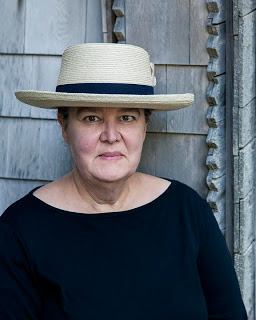
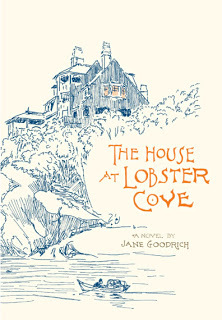
Jane Goodrich, co-founder of Saturn Press, has written a novel featuring George Nixon Black, whose real-life house, Kragsyde, a shingle-style architectural masterpiece built on the North Shore of Massachusetts, was recreated in loving detail by Jane and her husband, doing all the work themselves, on an island in Maine.
George Nixon Black, a complex and romantic man, spent a lifetime hiding in plain sight, harboring a secret of violence and a secret of love. Using characters, letters and events from history, and spanning the period between the Civil War and the Jazz Age, The House at Lobster Cove is part family saga, part love story, and an engaging personal journey set against the magnificence and mercilessness of the 19th century. The book is a loving testament to George Nixon Black, his house, and the secrets he held. It is an artisanal work combining all the aspects of Ms. Goodrich's distinguished career — building, designing, telling stories, writing, and printing. Thank you so much for being here, Jane!
Q: What prompted your interest in the life of GEORGE NIXON BLACK? How has learning about him changed your own life?
A: I must admit that George Nixon Black’s house caught my eye long before he did. I was aware of Kragsyde, his house at Lobster Cove in Manchester-by-the-Sea, Massachusetts for at least a decade before I ever knew of Nixon, as he was known by his peers. In fact, most people only know his name in association with his famous shingle-style house. Nixon’s personality was naturally modest, but as a wealthy gay man he practiced a habit of secrecy for his own safety. He left very little evidence of his life, and it is only through Kragsyde that his name remains in history.
Nixon’s Kragsyde was torn down after his death, but has lived in the light of architectural fame ever since. Once my husband and I had decided to build a replica of the house, Nixon became a ghost on our building site. Because we were doing all the work entirely ourselves, the rebuilding progressed slowly. Questions about how the original rooms looked or were used naturally led to questions about Nixon himself, and the members of his family who lived with him. As I began to research him, a fascinating individual emerged. Our replica was built in Maine, but Nixon lived in Boston so the first surprise I discovered was that he was born and spent his childhood in a Maine town less than 30 miles from where we had chosen to rebuild our Kragsyde.
Q: I understand you wrote THE HOUSE AT LOBSTER COVE by long hand. How did that help the writing and plotting process? How did you manage and keep track of the voluminous files and historical data?
A: The quick answer is that I have never been able to think and type, whether on a computer or typewriter, but the longer answer is I would be unable to write without the ability of long hand. I simply cannot imagine writing without actually writing. I have used the same fountain pen for 35 years and we are old friends. I work in a craft printing business, I hand built Kragsyde. It is natural for me to progress slowly and carefully with simple tools. I have often heard of writing described as a craft, and indeed it is. Building a house from the ground up by hand and writing a novel are very similar activities.
When I began to research George Nixon Black I started with primary source materials, particularly his will. I built out lists of his neighbors, people who he worked with in business, his family members, friends, employees, and descendants of people to whom he left money. I made index cards at first, but quickly memorized all this information, and kept my eye out for these people in other historical contexts. My best tool was a simple notebook in which I set out a page for each year of his life divided into months. Whenever I found the smallest detail about him I wrote it in this timeline notebook. When the time to write and plot the novel came I filled in this timeline with events occurring in the larger world.
Q: You did extensive genealogical and period research for THE HOUSE AT LOBSTER COVE ( Black lived in the late 19th century). What was the most challenging but rewarding find? What was the path that led you there?
A: This is a funny story, at least for anyone who has ever done hours of research in a library. In following through with my list of Nixon’s friends I found that he had applied for a passport after the Civil War to travel to Europe with a friend named Frank Crowninshield. It turned out this Civil War era Frank was the uncle of the Frank Crowninshield who was the famous editor of Vanity Fair magazine in the 1920’s. In attempting to sort out the many Crowninshields and make sense of them I found myself in a huge quiet room in the Philips Library at the Peabody Essex Museum. Here I had called up a box of letters written by the Civil War soldier Frank Crowninshield. When I opened this box, dozens of letters mentioning Frank and George Nixon Black fell out. It was the single largest resource I ever found mentioning Nixon. I gasped audibly, and the heads of a half-dozen other researchers snapped up. Realizing my faux pas I apologized. “Sorry,” I said. “but I just found something.”“Lucky you.” one of them grumbled and went back to his research.
There are many such moments of serendipity that happen during research which make you feel you are hunting someone who wants to be found. I met a descendant I had been hoping to find, by bumping into them on a train platform in Providence. I went into a cellar of musty deed registers in Boston and the book I was seeking was open to the page I was looking for. A stray dog in a graveyard led me to, and sat down on, a grave I was seeking. That particular event made the hair on the back of my neck stick up!
Q: Would you have liked living in the same time as GEORGE NIXON BLACK? What mis(conceptions?) do we have about that period?
A: Would I like to be a member of the Gilded Age one percent? Yes and no. One could live unapologetically with great wealth which is a state unknown today, but the robber barons of the 19th century were puny compared with the tech robber barons of our time. Henry Ford would love the mark-up on an I-Phone compared to his Model T.
Medicine was crude and death and disease were part of daily life. Few families were not touched by the untimely death of one of their own. Teeth were a constant problem. Without antibiotics the smallest injury or sickness could be fatal. Crowd scenes in period movies never show enough missing teeth or pregnant women to be accurate to any earlier time.
A woman’s life choices were more narrow than today, which can also be viewed as both a good and bad thing. One might, as a woman be expected to stay home and have children, but one would not be expected to get up the day after a birth and answer an email and be back in a full time job in a month. People were allowed more time to be ill and more time to grieve. Today we are impatient with that.
One big misconception people seem to have is about Victorian prudery. People of the 19th century were just as racy as in any other time. It was just not so often on public display, and considering the sort of things acceptable for public display these days, perhaps they were wiser.
Both centuries have much to recommend them and much that is less desirable. I go back to THE HOUSE AT LOBSTER COVE and what I have Nixon conclude in the year 1902: The world does not get better, it merely changes.
Q: THE HOUSE AT LOBSTER COVE is your first book. It is exceeding expectations and succeeding in the marketplace. What was the most exhilarating and frustrating part of the experience for you?
A: The frustrating part? During the submission process of the novel, my literary agent and my dog died unexpectedly, and within days of one another. That was a bad week.
The most exhilarating part has been successfully introducing George Nixon Black to the world. In reading fiction about gay men I found over and over stories was written as cautionary tales. Their lives seemed always to end in sickness, misery, imprisonment or death. It certainly was not always this way, and I wanted to tell the story of this little-known man. A quiet, happy life, which was led on his own terms without hurting anyone else, and without being unfaithful to himself. He overcame problems but lived for 34 years in a relationship of great love and fidelity, promoted artists of every sort, and left his money to charities which still benefit people and animals today. I often say his story would be that of Oscar Wilde if Oscar had a happy ending.
Q: What is obsessing you now and why?
A: The slipping away of the summer. I have always had a deep feeling for the summer. Perhaps this is one reason Kragsyde, as the apogee of the American summer house, appeals. I have always considered June, July and August as summer, and the shoulder months as cheap impostors. Therefore, once July 15th is behind me, I begin to fret, and am never completely cured until the following June 1st.
Q: What question didn’t I ask that I should have?
A: I’m going to answer two questions I am often asked. The first is how I feel about revealing a man to be gay after he has spent a lifetime hiding it?The world may not be better, but it has changed. In 1918, Nixon wrote about his long-term partner in his will. In his own words he wrote “ I desire to recognize the steadfast and faithful friendship that existed between us for many years...” In 1918 this statement was opaque, but today we know exactly what this statement about two men who had lived together for 34 years means. I think Nixon would be pleased to have his lifestyle recognized. He will be even more pleased when the world does not give it a second thought.
Q: Since my novel is about real people and real events why was it written as a fiction? George Nixon Black was a romantic and secretive man with a love of the arts. I think he would prefer that posterity saw him as a painting rather than a photograph. It is only through fiction that the reader can see with his heart.
Published on July 24, 2017 16:44
July 20, 2017
"Some stories do not need to be told..." Emily Colin talks about her exquisite new novel, THE DREAM KEEPER'S DAUGHTER
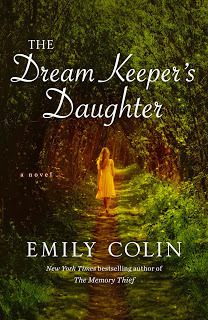
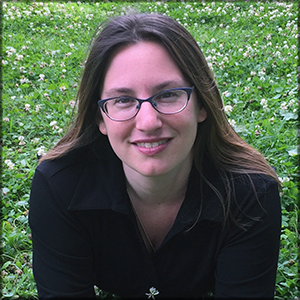
I don't remember when I first met Emily Colin. Only that she sent me pages of a book that were astounding--and that turned out to be the New York Times bestseller, The Memory Thief, about a man whose dreams are haunted by a woman he's never met. I swore I'd read her grocery lists next, but I don't have to because she just published The Dream Keeper's Daughter, about secrets, reality and the very nature of love. And you want to watch the amazing trailer here.
I'm thrilled to host Emily here. Thank you, Emily!
<!-- /* Font Definitions */ @font-face {font-family:"<span class="goog-spellcheck-word" style="background: yellow none repeat scroll 0% 0%;" id=":dm.2" tabindex="-1" role="menuitem" aria-haspopup="true">Cambria</span> Math"; <span class="goog-spellcheck-word" style="background: yellow none repeat scroll 0% 0%;" id=":dm.3" tabindex="-1" role="menuitem" aria-haspopup="true">panose</span>-1:2 4 5 3 5 4 6 3 2 4; <span class="goog-spellcheck-word" style="background: yellow none repeat scroll 0% 0%;" id=":dm.4" tabindex="-1" role="menuitem" aria-haspopup="true">mso</span>-font-<span class="goog-spellcheck-word" style="background: yellow none repeat scroll 0% 0%;" id=":dm.5" tabindex="-1" role="menuitem" aria-haspopup="true">charset</span>:0; <span class="goog-spellcheck-word" style="background: yellow none repeat scroll 0% 0%;" id=":dm.6" tabindex="-1" role="menuitem" aria-haspopup="true">mso</span>-generic-font-family:auto; <span class="goog-spellcheck-word" style="background: yellow none repeat scroll 0% 0%;" id=":dm.7" tabindex="-1" role="menuitem" aria-haspopup="true">mso</span>-font-pitch:variable; <span class="goog-spellcheck-word" style="background: yellow none repeat scroll 0% 0%;" id=":dm.8" tabindex="-1" role="menuitem" aria-haspopup="true">mso</span>-font-signature:-536870145 1107305727 0 0 415 0;} @font-face {font-family:<span class="goog-spellcheck-word" style="background: yellow none repeat scroll 0% 0%;" id=":dm.9" tabindex="-1" role="menuitem" aria-haspopup="true">Calibri</span>; <span class="goog-spellcheck-word" style="background: yellow none repeat scroll 0% 0%;" id=":dm.10" tabindex="-1" role="menuitem" aria-haspopup="true">panose</span>-1:2 15 5 2 2 2 4 3 2 4; <span class="goog-spellcheck-word" style="background: yellow none repeat scroll 0% 0%;" id=":dm.11" tabindex="-1" role="menuitem" aria-haspopup="true">mso</span>-font-<span class="goog-spellcheck-word" style="background: yellow none repeat scroll 0% 0%;" id=":dm.12" tabindex="-1" role="menuitem" aria-haspopup="true">charset</span>:0; <span class="goog-spellcheck-word" style="background: yellow none repeat scroll 0% 0%;" id=":dm.13" tabindex="-1" role="menuitem" aria-haspopup="true">mso</span>-generic-font-family:auto; <span class="goog-spellcheck-word" style="background: yellow none repeat scroll 0% 0%;" id=":dm.14" tabindex="-1" role="menuitem" aria-haspopup="true">mso</span>-font-pitch:variable; <span class="goog-spellcheck-word" style="background: yellow none repeat scroll 0% 0%;" id=":dm.15" tabindex="-1" role="menuitem" aria-haspopup="true">mso</span>-font-signature:-520092929 1073786111 9 0 415 0;} /* Style Definitions */ p.<span class="goog-spellcheck-word" style="background: yellow none repeat scroll 0% 0%;" id=":dm.16" tabindex="-1" role="menuitem" aria-haspopup="true">MsoNormal</span>, <span class="goog-spellcheck-word" style="background: yellow none repeat scroll 0% 0%;" id=":dm.17" tabindex="-1" role="menuitem" aria-haspopup="true">li</span>.<span class="goog-spellcheck-word" style="background: yellow none repeat scroll 0% 0%;" id=":dm.18" tabindex="-1" role="menuitem" aria-haspopup="true">MsoNormal</span>, div.<span class="goog-spellcheck-word" style="background: yellow none repeat scroll 0% 0%;" id=":dm.19" tabindex="-1" role="menuitem" aria-haspopup="true">MsoNormal</span> {<span class="goog-spellcheck-word" style="background: yellow none repeat scroll 0% 0%;" id=":dm.20" tabindex="-1" role="menuitem" aria-haspopup="true">mso</span>-style-<span class="goog-spellcheck-word" style="background: yellow none repeat scroll 0% 0%;" id=":dm.21" tabindex="-1" role="menuitem" aria-haspopup="true">unhide</span>:no; <span class="goog-spellcheck-word" style="background: yellow none repeat scroll 0% 0%;" id=":dm.22" tabindex="-1" role="menuitem" aria-haspopup="true">mso</span>-style-<span class="goog-spellcheck-word" style="background: yellow none repeat scroll 0% 0%;" id=":dm.23" tabindex="-1" role="menuitem" aria-haspopup="true">qformat</span>:yes; <span class="goog-spellcheck-word" style="background: yellow none repeat scroll 0% 0%;" id=":dm.24" tabindex="-1" role="menuitem" aria-haspopup="true">mso</span>-style-parent:""; margin:0in; margin-bottom:.0001pt; <span class="goog-spellcheck-word" style="background: yellow none repeat scroll 0% 0%;" id=":dm.25" tabindex="-1" role="menuitem" aria-haspopup="true">mso</span>-pagination:widow-orphan; font-size:12.0pt; font-family:<span class="goog-spellcheck-word" style="background: yellow none repeat scroll 0% 0%;" id=":dm.26" tabindex="-1" role="menuitem" aria-haspopup="true">Calibri</span>; <span class="goog-spellcheck-word" style="background: yellow none repeat scroll 0% 0%;" id=":dm.27" tabindex="-1" role="menuitem" aria-haspopup="true">mso</span>-<span class="goog-spellcheck-word" style="background: yellow none repeat scroll 0% 0%;" id=":dm.28" tabindex="-1" role="menuitem" aria-haspopup="true">ascii</span>-font-family:<span class="goog-spellcheck-word" style="background: yellow none repeat scroll 0% 0%;" id=":dm.29" tabindex="-1" role="menuitem" aria-haspopup="true">Calibri</span>; <span class="goog-spellcheck-word" style="background: yellow none repeat scroll 0% 0%;" id=":dm.30" tabindex="-1" role="menuitem" aria-haspopup="true">mso</span>-<span class="goog-spellcheck-word" style="background: yellow none repeat scroll 0% 0%;" id=":dm.31" tabindex="-1" role="menuitem" aria-haspopup="true">ascii</span>-theme-font:minor-<span class="goog-spellcheck-word" style="background: yellow none repeat scroll 0% 0%;" id=":dm.32" tabindex="-1" role="menuitem" aria-haspopup="true">latin</span>; <span class="goog-spellcheck-word" style="background: yellow none repeat scroll 0% 0%;" id=":dm.33" tabindex="-1" role="menuitem" aria-haspopup="true">mso</span>-<span class="goog-spellcheck-word" style="background: yellow none repeat scroll 0% 0%;" id=":dm.34" tabindex="-1" role="menuitem" aria-haspopup="true">fareast</span>-font-family:<span class="goog-spellcheck-word" style="background: yellow none repeat scroll 0% 0%;" id=":dm.35" tabindex="-1" role="menuitem" aria-haspopup="true">Calibri</span>; <span class="goog-spellcheck-word" style="background: yellow none repeat scroll 0% 0%;" id=":dm.36" tabindex="-1" role="menuitem" aria-haspopup="true">mso</span>-<span class="goog-spellcheck-word" style="background: yellow none repeat scroll 0% 0%;" id=":dm.37" tabindex="-1" role="menuitem" aria-haspopup="true">fareast</span>-theme-font:minor-<span class="goog-spellcheck-word" style="background: yellow none repeat scroll 0% 0%;" id=":dm.38" tabindex="-1" role="menuitem" aria-haspopup="true">latin</span>; <span class="goog-spellcheck-word" style="background: yellow none repeat scroll 0% 0%;" id=":dm.39" tabindex="-1" role="menuitem" aria-haspopup="true">mso</span>-<span class="goog-spellcheck-word" style="background: yellow none repeat scroll 0% 0%;" id=":dm.40" tabindex="-1" role="menuitem" aria-haspopup="true">hansi</span>-font-family:<span class="goog-spellcheck-word" style="background: yellow none repeat scroll 0% 0%;" id=":dm.41" tabindex="-1" role="menuitem" aria-haspopup="true">Calibri</span>; <span class="goog-spellcheck-word" style="background: yellow none repeat scroll 0% 0%;" id=":dm.42" tabindex="-1" role="menuitem" aria-haspopup="true">mso</span>-<span class="goog-spellcheck-word" style="background: yellow none repeat scroll 0% 0%;" id=":dm.43" tabindex="-1" role="menuitem" aria-haspopup="true">hansi</span>-theme-font:minor-<span class="goog-spellcheck-word" style="background: yellow none repeat scroll 0% 0%;" id=":dm.44" tabindex="-1" role="menuitem" aria-haspopup="true">latin</span>; <span class="goog-spellcheck-word" style="background: yellow none repeat scroll 0% 0%;" id=":dm.45" tabindex="-1" role="menuitem" aria-haspopup="true">mso</span>-<span class="goog-spellcheck-word" style="background: yellow none repeat scroll 0% 0%;" id=":dm.46" tabindex="-1" role="menuitem" aria-haspopup="true">bidi</span>-font-family:"Times New Roman"; <span class="goog-spellcheck-word" style="background: yellow none repeat scroll 0% 0%;" id=":dm.47" tabindex="-1" role="menuitem" aria-haspopup="true">mso</span>-<span class="goog-spellcheck-word" style="background: yellow none repeat scroll 0% 0%;" id=":dm.48" tabindex="-1" role="menuitem" aria-haspopup="true">bidi</span>-theme-font:minor-<span class="goog-spellcheck-word" style="background: yellow none repeat scroll 0% 0%;" id=":dm.49" tabindex="-1" role="menuitem" aria-haspopup="true">bidi</span>;} .<span class="goog-spellcheck-word" style="background: yellow none repeat scroll 0% 0%;" id=":dm.50" tabindex="-1" role="menuitem" aria-haspopup="true">MsoChpDefault</span> {<span class="goog-spellcheck-word" style="background: yellow none repeat scroll 0% 0%;" id=":dm.51" tabindex="-1" role="menuitem" aria-haspopup="true">mso</span>-style-type:export-only; <span class="goog-spellcheck-word" style="background: yellow none repeat scroll 0% 0%;" id=":dm.52" tabindex="-1" role="menuitem" aria-haspopup="true">mso</span>-default-props:yes; font-family:<span class="goog-spellcheck-word" style="background: yellow none repeat scroll 0% 0%;" id=":dm.53" tabindex="-1" role="menuitem" aria-haspopup="true">Calibri</span>; <span class="goog-spellcheck-word" style="background: yellow none repeat scroll 0% 0%;" id=":dm.54" tabindex="-1" role="menuitem" aria-haspopup="true">mso</span>-<span class="goog-spellcheck-word" style="background: yellow none repeat scroll 0% 0%;" id=":dm.55" tabindex="-1" role="menuitem" aria-haspopup="true">ascii</span>-font-family:<span class="goog-spellcheck-word" style="background: yellow none repeat scroll 0% 0%;" id=":dm.56" tabindex="-1" role="menuitem" aria-haspopup="true">Calibri</span>; <span class="goog-spellcheck-word" style="background: yellow none repeat scroll 0% 0%;" id=":dm.57" tabindex="-1" role="menuitem" aria-haspopup="true">mso</span>-<span class="goog-spellcheck-word" style="background: yellow none repeat scroll 0% 0%;" id=":dm.58" tabindex="-1" role="menuitem" aria-haspopup="true">ascii</span>-theme-font:minor-<span class="goog-spellcheck-word" style="background: yellow none repeat scroll 0% 0%;" id=":dm.59" tabindex="-1" role="menuitem" aria-haspopup="true">latin</span>; <span class="goog-spellcheck-word" style="background: yellow none repeat scroll 0% 0%;" id=":dm.60" tabindex="-1" role="menuitem" aria-haspopup="true">mso</span>-<span class="goog-spellcheck-word" style="background: yellow none repeat scroll 0% 0%;" id=":dm.61" tabindex="-1" role="menuitem" aria-haspopup="true">fareast</span>-font-family:<span class="goog-spellcheck-word" style="background: yellow none repeat scroll 0% 0%;" id=":dm.62" tabindex="-1" role="menuitem" aria-haspopup="true">Calibri</span>; <span class="goog-spellcheck-word" style="background: yellow none repeat scroll 0% 0%;" id=":dm.63" tabindex="-1" role="menuitem" aria-haspopup="true">mso</span>-<span class="goog-spellcheck-word" style="background: yellow none repeat scroll 0% 0%;" id=":dm.64" tabindex="-1" role="menuitem" aria-haspopup="true">fareast</span>-theme-font:minor-<span class="goog-spellcheck-word" style="background: yellow none repeat scroll 0% 0%;" id=":dm.65" tabindex="-1" role="menuitem" aria-haspopup="true">latin</span>; <span class="goog-spellcheck-word" style="background: yellow none repeat scroll 0% 0%;" id=":dm.66" tabindex="-1" role="menuitem" aria-haspopup="true">mso</span>-<span class="goog-spellcheck-word" style="background: yellow none repeat scroll 0% 0%;" id=":dm.67" tabindex="-1" role="menuitem" aria-haspopup="true">hansi</span>-font-family:<span class="goog-spellcheck-word" style="background: yellow none repeat scroll 0% 0%;" id=":dm.68" tabindex="-1" role="menuitem" aria-haspopup="true">Calibri</span>; <span class="goog-spellcheck-word" style="background: yellow none repeat scroll 0% 0%;" id=":dm.69" tabindex="-1" role="menuitem" aria-haspopup="true">mso</span>-<span class="goog-spellcheck-word" style="background: yellow none repeat scroll 0% 0%;" id=":dm.70" tabindex="-1" role="menuitem" aria-haspopup="true">hansi</span>-theme-font:minor-<span class="goog-spellcheck-word" style="background: yellow none repeat scroll 0% 0%;" id=":dm.71" tabindex="-1" role="menuitem" aria-haspopup="true">latin</span>; <span class="goog-spellcheck-word" style="background: yellow none repeat scroll 0% 0%;" id=":dm.72" tabindex="-1" role="menuitem" aria-haspopup="true">mso</span>-<span class="goog-spellcheck-word" style="background: yellow none repeat scroll 0% 0%;" id=":dm.73" tabindex="-1" role="menuitem" aria-haspopup="true">bidi</span>-font-family:"Times New Roman"; <span class="goog-spellcheck-word" style="background: yellow none repeat scroll 0% 0%;" id=":dm.74" tabindex="-1" role="menuitem" aria-haspopup="true">mso</span>-<span class="goog-spellcheck-word" style="background: yellow none repeat scroll 0% 0%;" id=":dm.75" tabindex="-1" role="menuitem" aria-haspopup="true">bidi</span>-theme-font:minor-<span class="goog-spellcheck-word" style="background: yellow none repeat scroll 0% 0%;" id=":dm.76" tabindex="-1" role="menuitem" aria-haspopup="true">bidi</span>;} @page WordSection1 {size:8.5in 11.0in; margin:1.0in 1.25in 1.0in 1.25in; <span class="goog-spellcheck-word" style="background: yellow none repeat scroll 0% 0%;" id=":dm.77" tabindex="-1" role="menuitem" aria-haspopup="true">mso</span>-header-margin:.5in; <span class="goog-spellcheck-word" style="background: yellow none repeat scroll 0% 0%;" id=":dm.78" tabindex="-1" role="menuitem" aria-haspopup="true">mso</span>-footer-margin:.5in; <span class="goog-spellcheck-word" style="background: yellow none repeat scroll 0% 0%;" id=":dm.79" tabindex="-1" role="menuitem" aria-haspopup="true">mso</span>-paper-source:0;} div.WordSection1 {page:WordSection1;} </style> <br /><div class="MsoNormal"><span style="font-family: "times new roman"; font-size: 12pt; line-height: 107%;"><i>The Dream Keeper’s Daughter </i>is the story of single mother and field archaeologist Isabel Griffin, whose mother disappeared when she was 16 and whose boyfriend, Max Adair, vanished in the woods not 50 feet from where she was standing—the day after she’d told him she was pregnant. After her mother went missing and her father sank deep into an obsession with finding his wife, Isabel vowed that if such a thing ever happened to her, she wouldn’t allow herself to become consumed by what she’d lost. So when Max disappears, she gets her PhD in archaeology and devotes herself to raising their daughter, Finn. But <span class="aBn" data-term="goog_1213330631" tabindex="0"><span class="aQJ">eight years later</span></span>, on a dig in Barbados, she gets a mysterious phone call. The hauntingly familiar voice on the other end says only, <i>Isabel. Keep her safe, </i>before they’re disconnected. Still, Isabel is sure the caller was Max—and as one peculiar event follows another, she has to decide whether honoring the promise she made all those years ago means believing the impossible: Max is stranded 200 years in the past, on the eve of a historic Barbados slave rebellion, and the choices he makes will shape both of their lives forever.</span><br /><br /><br /><br />Some stories do not need to be told.</div><div class="MsoNormal"><br /></div><div class="MsoNormal">And others? They claw their way out of you, whether or not you feel inclined to share them. They cannibalize your thoughts at traffic lights, at the grocery store, even mid-conversation, so that you break off what you’re saying and stare into the distance, causing your unfortunate companion to believe that a) you’ve lost your mind, or b) the discussion at hand was so dull, you’ve chosen to vacate your body rather than remain a part of it. </div><div class="MsoNormal"><br /></div><div class="MsoNormal">The truth, of course, is both better and worse. You’re not bored. You’re <i style="mso-bidi-font-style: normal;">possessed</i>—by an idea, by people who live only inside your head. And when they speak, you are compelled to listen.</div><div class="MsoNormal"><br /></div><div class="MsoNormal">Really, it can’t be easy hanging out with fiction writers.</div><div class="MsoNormal"><br /></div><div class="MsoNormal"><i style="mso-bidi-font-style: normal;">The Dream Keeper’s Daughter </i>was one of these stories. But the strange thing about it was that the character who possessed me wasn’t Isabel, who I’d first envisioned pregnant and running through the woods, screaming the name of the man she loved as he tore through the brambles—or even Max, the man himself, who chased a ghost through the trees behind his parents’ house and wound up in 1816 Barbados, on the eve of a slave rebellion that would shape the lives of his family forever. These were the main characters of my story, and you’d think that their voices would be the ones that whispered in my ears, kept me up at night, and rendered me the world’s worst—or at least most frustrating—conversationalist.</div><div class="MsoNormal"><br /></div><div class="MsoNormal">No—the character who captivated me was Ryan. He was meant, at first, to be no more than Isabel’s best friend, a sounding board and a surrogate parent for her child, whose father had vanished in the woods and never returned. But somehow, Ryan became much more. He had a past, deep-seated hurts and ghosts of his own, and these somehow took root in my novel without my conscious volition. In fact, I was annoyed: What business did he have, speaking up like this? Didn’t he know he only had a bit part to play?</div><div class="MsoNormal"><br /></div><div class="MsoNormal">But it was no use. His story grew with Isabel and Max’s, until it became just as important to me as theirs. His voice spoke to me on the verge of sleep, jolted me awake in the morning. </div><div class="MsoNormal"><br /></div><div class="MsoNormal">It was like being haunted, really.</div><div class="MsoNormal"><br /></div><div class="MsoNormal">My point, I suppose, is this: If you don’t like what Ryan has to say, blame him. I had nothing to do with it.</div>
Published on July 20, 2017 10:32
July 18, 2017
Why do we love celebrities so much? The divine Julie Klam answers all as she talks about her wonderful latest, THE STARS IN OUR EYES
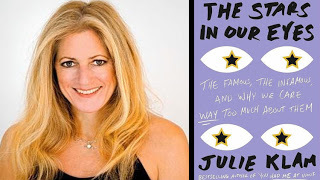
Julie Klam has a bio on her website that is so wonderful, I want to reproduce it here:
Julie Klam grew up in Bedford, New York. Don't be confused if you see that her brother, the author Matthew Klam, says he was born in Katonah, New York. Katonah is in the town of Bedford, and she can call it whatever she wants. After attending NYU's Tisch School of the Arts and interning at Late Night with David Letterman, Julie went on to write for such publications as O: The Oprah Magazine, Rolling Stone, Harper's Bazaar, Glamour, and for the VH1 television show Pop-Up Video, where she earned an Emmy nomination for Outstanding Special Class Writing. Currently she writes for The New York Times, The Washington Post, and the magazines that haven't folded. She lives in New York City with her daughter, her Dan Davenport, and a variety of cute dogs.
Julie's the author of Friendkeeping, Love at First Bark, You Had Me at Woof, and Please Excuse my Daughter, and her latest book The Stars in Our Eyes is so wonderful that you are going to buy up twenty copies just to hand out to any celebrity you might meet!
Thank you so much, Julie. For everything.
So, as someone who once followed Steve Martin around the block until he hid from me—(he’s actually very shy, I’ve heard. Or that’s my explanation, anyway), I devoured your book. What was the “Why Now” moment when you decided to write it? (P.S. I gasped when I saw your had a blurb from Carly Simon.)
I have always wanted to write something about my own love of celebrities but I had never thought it would be a book. When I was getting divorced, I really wanted to write something that was not about me (or me now) and that was how it was born. Because of a confluence of things (related to my divorce) it took me longer to write this book, and it ended up being when a reality tv star became president so it definitely has a different poignancy (if I may) now.
Do you think that living in NYC makes us more celebrity conscious and less apt to hurl ourselves on celebrities? I had a friend who sat next to Anne Meara once and had a whole conversation about the food and even let Anne Meara have a bite—and never once did they talk about her celebrity. I sat beside Margo Martindale once and we spent a half hour talking about my handbag! So my question is, how do we balance our ferocious need to know these people with our devil-may-care attitudes that we are not going to intrude in their lives like everyone else?
I think we pride ourselves on being cool here. I have had those kind of exchanges you are talking about, though I act way more buoyant then with other people. I feel like when you leave a celebrity alone, you’re giving them a gift. Today I was walking home from the gym and passed Samantha Bee walking with her two little kids and you could almost feel her thinking, “please don’t.”
I love that you thought celebrities could save you, but YOU are a celebrity yourself. How does it feel to be on the other side? And are book celebrities less than Hollywood ones? What about animal celebrities, the ones who have zillions of followers on twitter?
I’m not a celebrity, but I recently talked to a famous writer friend about the weird, small world of the famous writer. I don’t mean Stephen King or James Patterson, but like Colson Whitehead and Gary Shteyngart (and just not to name only men, Anne Rice, Liz Gilbert). They aren’t less, they are different. There are very few people who are known by everyone. And the new breed of internet celebrity, well, they are different than the old kind, because talent isn’t necessarily what made them famous.
You must have had so much fun writing this book. Did you find yourself getting re-obsessed at all? The fun part about writing this book was when I was wasting time reading stupid stories about celebrities, I could pretend I was working!
It’s funny, but the one celebrity I actually know, Al Kooper, from Blood, Sweat & Tears, never once has talked music with me. And it’s better that way. We only talk about movies, so there feels like common ground. And I think readers would want to know, what’s the best way to stalk, um, I mean, approach a celebrity?
I would say feel it out. If there’s a celebrity at an opening you can approach them, if they’re buying Preparation H in Duane Reade, maybe not a good time. I think most people appreciate a brief, ‘your work has meant a great deal to me, thank you’ and move on. I was working for a caterer at a bar mitzvah and Ray Liotta was there and I said, “I don’t want to bother you, but I loved Dominick and Eugene so much.” And he was genuinely happy and asked me my name and then I skittered away.
I also want to ask about the book’s cover, which I absolutely adore. Since I know that covers are marketing tools, and they can change and change and change, was this the first and only cover? Were there others?
HA HA HA First of all, thank you. I am forgetting now but I think there were 100 covers but I didn’t see any of them, because my publisher, Geoff Kloske, and editor, Jake Morrissey, didn’t think any of them were right. This cover took the longest of any of my covers and I started to wonder if it would ever happen. I actually made suggestions (all involving glitter). When I came in to see it, Geoff threw all the rejects on the table and they were cool, but just not quite right. And they had this one (though it was sort of dusty rose and I asked if they could make it a different color, because pink books frighten me) and it was like WOW!
What’s obsessing you now and why?
Well, my horrible obsession is the news from the government, I need to cap my intake because I go down all of the dark rabbit holes and it’s very easy to despair and wonder if there’s any point to anything when these cruel people are in power. I am also obsessed to finding sandals to go with a new dress.
What question didn’t I ask that I should have?
You should have asked, what do I think of Caroline Leavitt? Well, I think she’s a brilliant writer and a kind supportive friend and I adore her.
Published on July 18, 2017 10:24
July 5, 2017
Carol Hoenig talks about her wonderful new bookstore (it has WINE! and FOOD!) The Turn of the Corkscrew
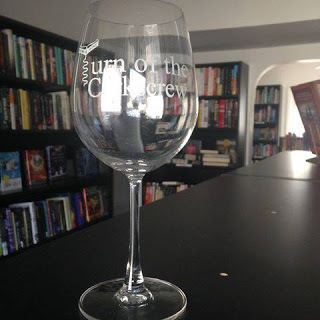
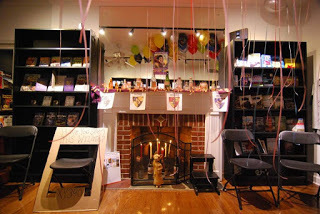

Who isn't thrilled when a great new bookstore opens up? I first visited Turn of the Corkscrew: Books and Wine (110 North Park Ave, Rockville Center, Long Island, NY) for a reading. It's incredible! Not only does it have these wonderful winding rooms, but it has very special wines (served in real wine glasses), delicious food, and all the books you could ever want. You can paint and sip, bring a date, browse the books, have great wine and food, and just hang and talk to Carol and Peggy! What's particularly wonderful is that both Carol and Peggy risked it all to create this gorgeous space, so even if you don't live near by, you can still place online orders. Do it for the community. Do it for yourself. Do it for bookstores everywhere. And thank you so much, Carol for this interview!
In these tough times, what made you want to open a book store? Good question. Both Peggy, my business partner, and I had been talking for a number of years (after having worked at Borders Books for many years) of wanting to open a bookstore, but we knew the timing wasn’t right since bookstores seemed to be struggling, not to mention closing in droves; however, since I have always been involved in the publishing industry as a consultant and writer, I started to see that independent bookstores were making a comeback. So, we dipped our toes in the water and began researching the possibilities and managed to overcome each hurdle that was put in our way, and here we are. Go figure. What I love is that your store also has a wine bar! And delicious food! And a warm comfortable feeling to it. Did you know this was always what you wanted it to be or did it become that way organically? I was so impressed by the crowd, the interest, the whole energy of the place! Thanks so much, Caroline. And, yes, that is exactly what we wanted it to be. I’d been hosting a monthly book discussion in my home that we called Book & a Bottle since wine was always flowing, and my daughter who loves to cook, would prepare a menu inspired by the book we were discussing. Therefore, we wanted to shift that ambience to the bookstore. What's the hardest thing about running a bookstore? The easiest? The hardest is getting people into the store! We came up against major challenges months after we opened since our street was closed almost daily due to major infrastructure for six months. What with the internet offering books, people didn’t necessarily want to struggle to get to us since they had other options. In addition, we cannot give the dramatic discounts that Amazon can, but most of our faithful customers understand that we bring value to the community that the internet cannot. Also, because we had to use most of our working capital to get us through those six months, we have a limited budget to order in a lot of stock, which is very frustrating. As for the easiest part about running a bookstore I would have to say showing up for work. I’d worked from my home office for over ten years and wasn’t sure I’d like the commitment to get out of my PJ’s and come to work, but each day brings new opportunities, as well as challenges to overcome, and I like that. (That said, I still work as a publishing consultant, writer, editor, ghostwriter, etc, because sleep is overrated.)
What do you want people to know about Turn of the Corkscrew Books & Wine that they might be surprised to know? And as a professional namer (really!) I want to know how you came up with the great name for the shop! Well, we wanted to have our name represent that we are both a bookstore and a wine shop. Peggy and I were brainstorming in my kitchen one night and she spotted the display of corkscrews I have near my wine bar and at first shouted out, “Taming of the Corkscrew!” Then we realized that didn’t quite make sense, but then I remembered Henry James’ novella, Turn of the Screw and suggested that, while tacking on “Books & Wine” and we both loved it. I’m pleased to say we still do. Some people get it and some don’t, but it gives us an opportunity to talk about what we have to offer. What's obsessing you now and why? Introducing readers to new writers-whether they are new to the publishing industry or just to the reader. We believe society has so many distractions that yield little reward that delving in a book, whether it is fiction or nonfiction, can open a mind and show another side of the story. Reading doesn’t have to be dry and boring. It can create interesting conversations and add value to our lives. What question didn't I ask that I should have?
People may not realize that both Peggy and I believed so much in this venture that we both used our homes as collateral, as well as our savings. We know we won’t get rich anytime soon, but we believe in the necessity of education and books are instrumental in that. We host a lot of author events, workshops and readings, hoping to be a place for the community.
Published on July 05, 2017 16:02
Ellen Umansky talks about THE FORTUNATE ONES, thinking you are done writing when you are really not, forgiveness, the Holocaust, and so much more
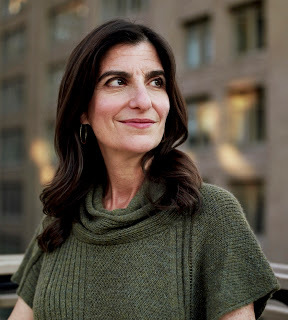
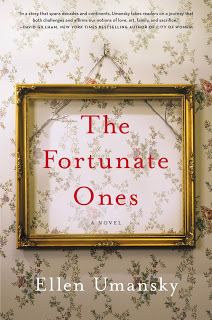
The Fortunate Ones is a truly GREAT novel. I didn't know Ellen Umansky before I read her novel, but halfway through, I knew I had to talk with her--and I'm so delighted I got the chance. She has published fiction and nonfiction in a variety of venues, including the New York Times, Salon, Playboy, and the short-story anthologies Lost Tribe: Jewish Fiction from the Edge and Sleepaway: Writings on Summer Camp. She has worked in the editorial departments of several publications, including the Forward, Tablet, and The New Yorker.
Thank you so much for being here, Ellen.
I always want to know why this book and why now? What was haunting you?
It’s funny talking about this book in terms of now, since it was such a long time in the making. The seeds of the contemporary story come from something that happened when I was growing up in Los Angeles. We knew a rich ophthalmologist who liked to live large: A house in Beverly Hills, trips on private planes, an enviable art collection. In the early 1990s, his two most valuable paintings, a Picasso and a Monet, were stolen.
Fast forward years later, the police tracked the paintings down to an airport locker in Cleveland. The doctor had set the theft up—to collect the insurance money. I remember my mother faxing me a clip of the story from theL.A. Times—that’s how long ago this was. I kept thinking about it, not only why he’d been driven to do it, but why he did it the way he did, and why he didn’t destroy the paintings. If he had, there wouldn’t have been anything in that Cleveland locker for the police to find.
As for the historical part of the novel: I was working as an editor of the Forward in the late 1990s, when stories of Nazi-pilfered art were coming to the fore. Around then a friend asked me to go with him to an art exhibit of a painter I had never heard of before, Chaim Soutine. I went somewhat reluctantly and was floored. Talk about being haunted: I couldn’t get Soutine out of my mind.
It’s astonishing to have a debut get so much high praise, including from the New Yorker. Did you expect this? Did you have a feeling? And does this reassure you or make you feel that writing your second novel is going to be like starting all over again?
I had NO idea. I mean, I hoped and fantasized—what writer doesn’t? But I worked on this novel for so long, about 15 years all told, and had so many rejections along the way—there were long stretches in which I doubted it would ever exist in the world. A number of years ago, my agent at the time tried to sell the novel. It didn’t go anywhere, and my agent told me as gently as she could that it was time to put it aside and work on something else. For more than a year I tried. Finally Joanna Hershon, a close friend of mine, an immensely talented writer, and the patron saint of this book, said to me, “I don’t think you’re done. I don’t think this book is over.” And it was entirely because of her faith that I took it out and began working on it again.
I’m so glad it didn’t sell years ago. It’s an entirely different book now, a deeper, more complex story. I certainly hope my next one doesn’t take me another decade and a half, but at the same time the response has been so profoundly gratifying; it is reassuring in all kinds of ways.
The history is so alive that it made me want to know about your research. The author Mary Morris once told me that when you research, you look for stories, not facts, and that’s the way to keep from being overwhelmed. What startled you in your research? What gave rise to story?
That’s such a wise way to put it. I loved doing the research, loved trying to hunt down those stories. They’re hard to come by, but you know them when you see them, and sometimes the smallest detail can open up a world. When I was looking at unpublished memoirs in the archive at the Center for Jewish History, I read something by a Viennese-born woman who mentioned being irate after her parents told her she couldn’t go to the movies anymore. Germany had annexed Austria, SS officers were on the streets, and that’s what she remembered. It was just an aside, but it cracked open Rose’s story for me. It felt true to a child’s experience, because of course you’re not paying attention to what politicians are saying or what the immigration quotas are. You want to go to the movies. You want to go to the same school you’ve always attended. And when you can’t, your life is turned upside down.
The story that haunted me for years was from a documentary on the Kindertransport called Into the Arms of Strangers. The filmmakers interviewed a number of survivors, including Lory Cahn, whose parents had secured a spot for her on a train when she was 14 years old. She was an only child. They took her to the station, she boarded the train, and held her father’s hands through the open train window. Then the train started to pull out. He was so distraught, he literally couldn’t let her go. He tugged her out the window and onto the platform. A few years later, the family was taken to Auschwitz.
The story is so harrowing and painful on every level. It drove home for me how hideous all those separations must have been, the desperation the parents must have felt to put their children on those trains.
Of course, we have to talk about art and what it really means to each of the remarkable women in your novel. Please talk about this.
I always knew I didn’t want it to be a conventionally beautiful piece of art, something that everyone would be dazzled by. I was more interested in what the painting represented emotionally to my characters than its aesthetics. It’s complicated for both women. Rose doesn’t actually even like the painting that much. She’s envious of all the attention her mother lavishes on it. Later, she’s unable to separate the painting from the loss of her parents. It becomes a cover. Rose hates thinking of the past, will do anything to avoid it, but at the same time, she can’t let the painting go.
When Lizzie first moves to L.A., she sees the Bellhop as an outsider, a stranger in her father’s modern house jutting over a canyon in Los Angeles, just as she is an outsider to his house and world. She’s comforted by it, especially when she learns that her mother loved it too. And she too latches on to its loss, feeling if she could just get it back, everything else would be righted in her life.
Both women can be a little closed-off, and I think the painting gives them room emotionally, to privately grieve and fantasize about what might have been. I love Soutine and was so drawn to his work, but you could make the argument that the art is beside the point. Rose and Lizzie could conceivably have felt this way about any object that’s tightly bound up in memories—a watch or a book or a scarf (something else Rose holds dear). Its all they imbue the object with that matters.
So much of your dazzling debut is about who we forgive, what we forgive, and what we can’t and why. Do you think there is ever anything that truly is unforgivable? And what is the cost of that?
That’s a good question. So much of what Rose has to endure—the forced separation from her parents, their murder, the loss of her home and country, is unforgivable. The question becomes how does she cope. I was interested in the long shadow of trauma. How does anyone move on from such devastations? Is it possible to?
It’s interesting to consider forgiveness in terms of Lizzie too; her father did something terrible—not as terrible as murder, of course, but unscrupulous and illegal and he allowed her to believe she was to blame. Does she forgive him in the end? For me, it was less about forgiveness than acceptance. Acceptance feels more attainable. You can choose to move on without forgiving. Lizzie doesn’t have to like what happened, she doesn’t even have to understand it, but I think in the end she accepts it’s the truth, however complicated and ugly it may be. Rose also has to forgive herself. For most of her life, she can’t accept the circumstances of her survival. She views it as a betrayal. How could she be here when her parents are not? Her struggle is to forgive herself for getting on that train—and to forgive her parents for putting her on it, for leaving them behind. It takes her nearly a lifetime.
What’s obsessing you now and why?
Well, I spent the other morning glued to the TV, watching James Comey testify, so I would say that the state of our democracy is obsessing me now. I’ve never been so grateful for our free press and for our judiciary. I never thought too when I was writing about World War II and a family’s desperate attempt to flee—trying to acquire visas and facing tight quotas and indifferent countries that turn them away—that there would be anything particularly relevant about these issues in 2017. But here we are.
What question didn’t I ask that I should have?
Less a question than an explanation: I’m not the same Ellen Umansky who is a professor of Jewish studies at Fairfield University. There are more Umanskys out there than you might think.
Published on July 05, 2017 15:50
June 25, 2017
National Book Award winner Julia Glass talks about her extraordinary new novel A HOUSE AMONG THE TREES, fame, why you shouldn't ignore the shadows cast by your parents, the bliss of writing, being just a tad nosy, and so much more
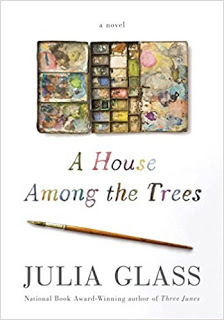
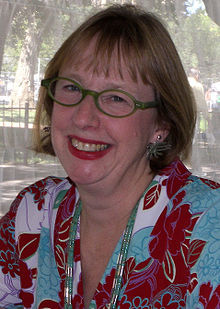
Oh! I get to interview a literary heroine! I've loved everything that Julia Glass has written, from her National Book Award winning Three Junes, followed by The Whole World Over, I See You Everywhere, The Widower's Tale, and And the Dark Sacred Night. Her newest, A House Among the Trees obsessed me and was one of those books I did not stop reading. About fame and love and family, A House Among the Trees is so alive, that it practically breathes.
What surprised--and delighted me--so much about this interview is how accessible Julia is, and how very funny! Thank you, thank you, Julia for letting me pester you with questions and for making this one of the most fun interviews, ever.
A House Among the Trees explores celebrity with unusual finesse. Did you ever expect your own fame? How has it (or hasn’t it) changed you?
To the extent that I've ever been "famous," it's nowhere on the scale of my characters Mort Lear--a genuinely iconic author based loosely on Maurice Sendak--or Nicholas Greene, a newly minted movie star whose face is, as my heroine Tommy Daulair observes, "on the racks at the CVS." For one thing, none of my readers are ever likely to recognize me walking down the street or even walking into a bookstore. (As I write this, I'm seated on a plane next to a woman who told me she's a librarian, then dove into her book. Even if I told her my name, I doubt she'd recognize it.) Another of my characters in A House Among the Trees remarks that being "secretly famous" is the best kind of famous there is. In the wake of my winning the National Book Award, back when I lived in New York's West Village, that's how I felt. Someone could be reading Three Junes across from me on the subway but would have no idea the author sat within arm's reach. That's a delightful experience. So I would answer this question by saying that if anything changed me at that pivotal point in my life--not that I was going to change much at age 46!--it was success, not fame. It gave me two precious gifts: First, thanks to increased royalties, it bought me more time to devote to writing fiction, rather than the assortment of freelance jobs that kept me afloat over the previous two decades; second, it gave me a moment in the limelight that enabled me to meet other writers, including many I revere and admire, some of whom I now count as friends. So, after years of working in solitude, I finally found my tribe. For the first time, I got to talk shop! And I found out something quite reassuring: All good writers are, at some level, nerds.
Like your other novels, A House Among the Trees is about family dynamics. I know I write about family because my own was so fractured, but what is it about this unit that draws you?
On the whole, both the family I was born into and the family I've made are your average crazy-quilt of blessings and tragedy, of love and emotional wounds, loyalties and betrayals. The same is generally true of the families I bring to imaginary existence in my novels. My characters may suffer grievous losses, but they are all relatively privileged, like me. So why is family life at the core of my work? Because I have a fundamental belief that whatever human beings witness and learn in the context of family will greatly determine the way they grow up and influence the world around them. (I love that haunting song in Sondheim's Into the Woods, "Children Will Listen." It's both tender and terrifying.) Not just every artist but every world leader will always carry, deep within, the child born to his or her parents in a particular place and time. Whether we honor our parents or rebel against them, whether we know them for half a century or were abandoned by them at birth, their shadows loom large. (Ignore those shadows at your peril!) I'm also fascinated and moved by the many "unconventional" ways in which people form families, whether out of necessity or choice. Such families make their way into my stories not through any political agenda but because I want to write about how resilient and adaptive people are, how decent people always try to fix what's broken--our hearts included. Sometimes we succeed, sometimes we don't. Sometimes even the smartest people make foolish choices. How we deal with the consequences (or don't) is what makes for a riveting tale. In A House Among the Trees, the initial challenge for all my characters is how to deal with the highly unanticipated final wishes of a great artist with a fragile ego. That challenge leads all of them down unexpected alleys into their past lives and the choices that have brought them to this crucial moment.
I love the way you jump both time and characters. How did you keep everything mapped out, or don’t you map out at all? I’m also curious about how you approach each new novel. Do you feel as if you are starting all over again? Or are you building on what has come before?
The way I move through time in my novels--which are dense with flashbacks (even flashbacks within flashbacks!) is entirely organic. Although I revise obsessively--my Achilles heel is overwriting, so I have to do a lot of paring down--rarely do I radically restructure the chronological rhythms that guided me instinctively at the start. Nor do I cut and paste. And I definitely do not map out a novel in advance; I'd make a terrible general! E. L. Doctorow said something about writing as if he were taking a long journey by car in the dark and could see only the road within the range of the headlights . . . yet had faith it would take him to his destination. What's good about this approach is that my characters can surprise me. It's much easier to let a character take on a greater role, or make an unanticipated choice, if there's no road map to follow. What's not so good is that I sometimes write myself into cul-de-sacs; backing out can be a challenge (I can almost hear that abrasive beep-beep-beep of construction vehicles in reverse.)
As for how it feels to start a new novel, sometimes I know I'll be bringing back a character or two from a previous book, yet even when I'm certain that I'm starting entirely anew, once in a while a character I think I've left behind for good comes knocking. Everything, really, is about the characters. Plot, in my novels, emerges entirely from the nature of their relationships, their choices, and the consequences of their actions. At the outset of a novel, I'm always worried that "nothing will happen."
I’m obsessed with the question, How well do we know the ones we love? It’s not just celebrities who have both a public and a private side. Can you talk about this, please?
Well, guess what? I'm obsessed with that question, too! I am a tremendously nosy person, by the way, and yet I'm fully aware that I will never know "the all of it" even about my husband, whom I've known for 33 years. I know even less about my parents--and increasingly less about my children as they grow into adulthood. (I can almost feel the watertight chambers forming in my 21-year-old son's psyche as he forges his independence; it's a little sad, but it's also right.) I'm also obsessed with how, in any given family, each member--even among siblings who feel close to one another--will have dramatically different perceptions of their parents, their upbringing, the significant events and memories of their early lives. This was the impetus behind my creation of the three McLeod brothers in Three Junes. Two years ago, while I was in the middle of writing A House Among the Trees, my father died. He saved EVERYTHING, and when I discovered an old candy box filled with diaristic notes and letters from his late teens and early twenties, it was like meeting another man: my dad before he met my mom, my dad before he was a dad! I also found boxes of photos he'd taken as a college undergraduate. I had the painful wish that I'd seen these papers and artifacts--many of them lovely in their revelations--before he died and that we could have talked about them. But you know what? I have a feeling he wouldn't have been comfortable with that. I do wonder, however, if he ever imagined my finding them after his death.
I loved how your novel probed just what it means to be gifted, and what it means not to be. At one point, a character says that being secretly famous is the best kind of famous to be. I love that line. Do you feel that fame interrupts great art?
Oh, so you noticed that "secretly famous" line! You know, let me add to what I said above that I think many people would love to know what it feels like to be revered, even adored by strangers (as both the author Mort Lear and the film star Nick Greene are in my novel). Who wouldn't love to turn appreciative heads or get a standing ovation? I have to confess that I had fun imagining what it would feel like to become suddenly famous--really famous--in creating the character Nicholas Greene, who lucks into a role that wins him every screen award there is. (Why do I feel guilty when writing is fun?!) But yes, I do think that boldface, magazine-cover fame can threaten the making of great art--mainly because it would have to force any genuinely introspective artist to question why his or her art has been "chosen." (Sidebar: Not all brilliant artists are introspective.) And if you are fortunate enough to stand on the pinnacle of a mountain, the view may be spectacular, but your perch is slippery and the only direction from there is back down. Artists who can both maintain and manage the pressure of that stature over decades are few and far between, I think. Some of those who succeed do so in part thanks to a stable, firmly rooted relationship in their lives. Others create a protective public illusion. (Read Richard Russo's fine new collection, Trajectory, for a chilling story involving characters clearly based on Robert Redford and Paul Newman, both of whom Russo has worked with and known.)
A House Among the Trees is, in part, a cautionary tale about creativity, fame, and ego. The relationship that the late Mort Lear held dearest (while taking it for granted) is the one he had with his quietly devoted assistant, Tommy Daulair, the novel's main protagonist--and of course she is left to weigh the costs of having allowed this man to keep her so close for the prime years of her adulthood. Though I never wrote from Lear's point of view, I began to realize that Tommy was effectively his emotional ballast--yet even so, she could not save him from the consequences of his own pride.
What’s obsessing you now and why?
Whether I'm going to take up the novel I abandoned midstream to write A House Among the Trees instead. As a writer, I've always been a serial monogamist, working on one book and one book only until it's done. This time, for the first time, I stepped out on a novel when I was 200 pages in; it felt like I was having an affair! Whether those characters (one of whom my readers know from The Widower's Tale) will forgive me and take me back is the burning question in my creative life at the moment.
What question should I have asked that I didn’t? [I think I wrote enough!!]
Published on June 25, 2017 14:33
June 18, 2017
Sharon Hart Green writes about what haunted her to pen her acclaimed novel COME BACK FOR ME
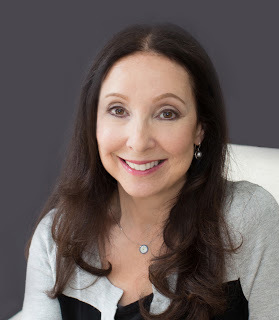
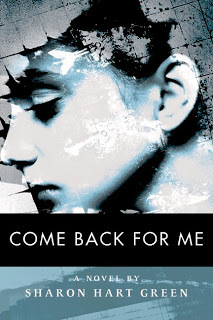
“Evocative and heart-wrenchingly beautiful, Come Back to Me is a must read for anyone with a moral conscience and a soul.” — Leah Kaminsky, winner of the Voss Literary Prize for her debut novel, The Waiting Room
“In Come Back for Me, Hart-Green explores the trauma and loss of one extended family as it clashes with life’s insistence upon being lived. Heartfelt and rich in detail, the story [is] unflinching in its portrayal of devastation and renewal…an impressive, ambitious, and highly readable debut.” — Joseph Skibell, author of A Blessing on the Moon and A Curable Romantic
Sometimes, I like to ask authors just to write something for the blog instead of an interview, and I'm delighted that Sharon Hart Green agreed! Thank you so, so much, Sharon.
Despite growing up in a serene Toronto neighbourhood, I was haunted by the stories of war and loss that seemed to hover over many of the Jewish inhabitants of our leafy enclave. My best friend’s father who’d lost half his family in Poland; the neighbour who’d been hidden for years in an Amsterdam closet; my father’s cousin who’d lost one of her arms in a Nazi concentration camp. Of course as a child, I knew they were different. After all, they spoke with strange accents and had gold teeth. But there was something else that I couldn’t put my finger on, something mysterious that I couldn’t name.
And as I grew older, I wanted to ask them (though I never could bring myself): after all they have lost, how could they still embrace life? How could they marry, bear children, build families and homes? How did they preserve the ability to laugh?
My decision to write Come Back for Me was not entirely a conscious one. True, I had been teaching Yiddish and Hebrew literature at the University of Toronto for several years, and many of the novels, stories, and poems I taught were about the war. But most of those works depicted lives that were deformed by suffering. Where were the stories of those who were somehow able to rise above their pain? Or was it all an illusion, a clever ruse to cover up lives that were broken inside?
This is the tale that I set out to tell.
Sharon Hart Green
Published on June 18, 2017 13:05



